#Storytellers are the most powerful beings in this universe.
Text
The Monkey King - Sun Wukong who first appears in Chinese stories (Journey to the West) during the Ming Dynasty period 1368 to 1644 CE, well after the introduction of Buddhism to China in about 206-220 CE.
But, was he inspired by another Monkey hero/character of myth?

The prevailing and dominant theory among Asian scholars is ...yeah, likely.
That character, Hanuman, king of the monkeys (the monkey people -Vanaras- of Vedic myth!).
The story follows a Buddhist monk who is accompanied by Sun Wukong and others to travel west to India to obtain sacred Buddhist sutras. Many of their powers and personality traits are similar as well.
We know that Vedic god such as Indra have made their way as far as Japan to take root and be worshipped because of the spread of Buddhism.
As I've talked about before and is shown in texts such as the journey's of Ibn Battuta / Ibn Fadlan, storytelling was a weapon and powerful tool for idea transfer--propagation. Philosophy was huge in the old world - and places such as Nalanda - the first residential university in the world - invited scholars from all over such as Greeks from the west, and the Japanese. Buddhism became a vehicle for trading things such as: martial arts information, medicine, sciences, and of course, myths and stories.
However, as with stories, people usually altered/coopted elements and molded them to better suit their cultures and fancy. That's a thing as old as time. I've shared how the panchatantra stories and jatka tales are thought to be the inspiration for nearly 30-50 percent of all nursery rhymes, ballads, "fairy tales".
Anyways back to this theory - Chinese Indologist Professor Liu Anwu of Peking University has dedicated chapters to the comparisons (in one of his works) to further break down this theory focusing on consistent and or similar depictions of beats in Journey to the West that of Rama's story in Ramayama and the Buddhist sutras.
Even though today the story of Sun Wukong is a wholly Chinese story - it's important to note the power of oral storytelling and how it travelled evolved over thousands of years, and, just as important, the vehicles it used to do so. Not just storytellers and philosophers and travelers but religion! Philosophy!
This is a theme heavily commented on and shown in Tales of Tremaine, which is my love letter and sort of self PhD. in comparative storytelling, mythology, and story foundry through an Asiatic lens (hence a silk road analog) stretching along a similar route the silk road did from damn near as far as you can east (complete with the oceanic routes) to as west as old venezia, portugal, and spain.
Also note: this is the most popular theory atm, but the operative word is theory. Experts likely far better than you, Internet, so chill before you comment, are still debating this. I know last week some of you were doctors in sociopolitical relations, the music industry before that, and then you were leading virologists before that. Spare us simpler folks from your mighty genius just now and sit down.
The point here is the beauty of stories and their ability to travel and morph and comment on themes/points ideologies important to cultures while being entertaining and showing that humans like certain universal moments, beats, archetypes, tropes, and progressions in tales.
Now, is that because we've naturally been predisposed liking them, or the opposite in that everyone went, yo, i dig this, took it home and someone else went, this is cool but needs to be more US (insert culture) and retold it. And thus...timemachine noises speed up. Here we are today?
You might not know that about 35,000 Chinese words ( I said this instead of Mandarin because they don't just show up in one language) are derived from Sanskrit as well as Pali (a Middle Indo-Aryan Liturgical Language -- meaning language of sacredness/religious use, in this case connected to sacred Buddhist texts). It is important to make the distinction, because, Internet!
Sanskrit did not SHAPE the Chinese languages. They evolved on their own. This is just a commentary on how words/stories shaped over travel in this case strongly through the spread of Buddhism.
Religion was the mover.
Back from quick bathroom break. Going to add again - INSPIRED is the keyword here.
INSPIRED.
Sun Wukong is his own mythos/character. Influence doesn't nor can claim dominion over everything in a later tale. Sun Wukong has gone on himself to inspire legends and characters Outside of China - re: most famously and legendary?
Son Goku - who is openly a Sun Wukong inspired character.
...hell, tbh, he might be the most famous monkey inspired super powered character now. Dude makes soccer stadiums air his fights. @_@.

#monkey king#monkey king journey to the west#hanuman#buddhist#buddhist monk#sun wukong#vedic gods#Japan#China#chinese legend#storytelling#mythology#myths and legends#asian mythology#mandarin#Sanskrit#pali#chinese language#dbz#dragon ball#dragon ball z#inspired#inspired by#the silk road#silk road retelling#philosophy#philosophers#journey to the west#fairy tales#nursery rhymes
25 notes
·
View notes
Text

Thinking a lot about this map and as someone I theorized that there are many other worlds. The world of Myths and Legends being one apart from Monster Word and Ever After. (Guided by the narrators who mention that place when introducing Cupid.)
#Theoretically speaking#Storytellers are the most powerful beings in this universe.#Since it is thanks to them that these worlds and stories exist.#Who then dedicate themselves to narrating#Will it be an allegory to the real world?#Are we the ones who create these stories?#monster high#mh#ever after high#eah#ca cupid#raven queen#apple white#frankie stein#draculaura#I mention the last four because they are the protagonists of the book “Legend of the Shadow High”
66 notes
·
View notes
Text
Good Omens is queering TV/storytelling - part 1: GAZE

I would argue that part of why Good Omens is so refreshingly queer is because it does not cater to the male gaze (which centers around the preferences - aesthetic, romantic, sexual, visual, logical, emotional, political ... - of mainly white men in positions of power):
no oversexualization of groups or types of people: Women or characters that could be read as female presenting are not overly sexualized. In fact, some of them are shown to be grimy, slimy and not sexual at all. All of them are real characters and not just cardboard-cutout on-screen versions of male misogynistic fantasies. They portray real people with real people problems. They are human, or exempt from our categories when portraying angels or demons. There are no overly sexualized bodies in general (as has so far also often been the case with young gay men, PoC, etc.), no fetishization of power imbalances, and not exclusively youthful depiction of love and desire.

sex or sexual behavior is not shown directly (yet): All imagery and symbolism of sex and sexuality is used not to entice the audience but is very intimately played out between characters, which makes it almost uncomfortable to watch (e.g., Aziraphale being tempted to eat meat, Crowley watching Aziraphale eat, the whole gun imagery).
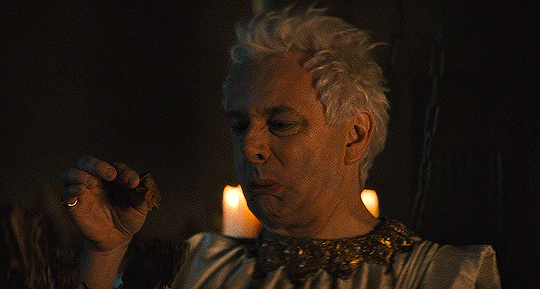
flaunting heteronormativity: Throughout GO but especially GO2, there is very little depiction of heterosexual/romantic couples; most couples are very diverse and no one is making a fuss about it. There is no fetishization of bodies or identities. Just people (and angels and demons) being their beautiful selves (or trying to).
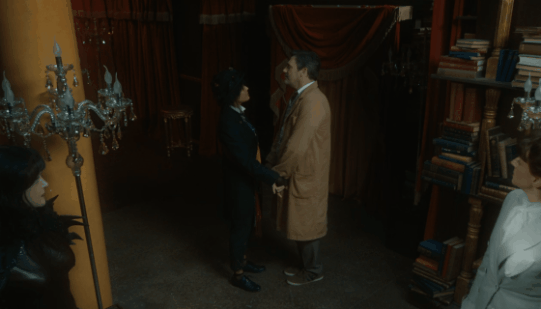
age: Even though Neil Gaiman explained that Crowley and Aziraphale are middle-aged because the actors are, I think it is also queering the idea of romance, love and desire existing mainly within youthful contexts. Male gaze has taught us that young people falling and being in love is what we have to want to see, and any depiction of love that involves people being not exactly young anymore is either part of a fetishized power imbalance (often with an older dude using his power to prey on younger folx) or presents us with marital problems, loss of desire, etc. – all with undertones of decay and patronizing sympathy. Here, however, we get a beautifully crafted, slow-burn, and somehow super realistic love story that centers around beings older than time and presenting as humans in their 50s figuring out how to deal with love. It makes them both innocent and experienced, in a way that is refreshing and heartbreaking and unusual and real.

does not (exclusively) center around romantic/sexual love: I don’t know if this is a gaze point exactly but I feel like male gaze and resulting expectations of what a love story should look like are heavily responsible for our preoccupation with romantic/sexual love in fiction – the “boy gets girl” type of story. And even though, technically, GO seems to focus on a romantic love story in the end, it is also possible to read this relationship but also the whole show as centering around a kind of love that goes beyond the narrow confines of our conditioned boxed-in thinking. It seems to depict a love of humanity and the world and the universe and just the ineffability of existence as a whole.
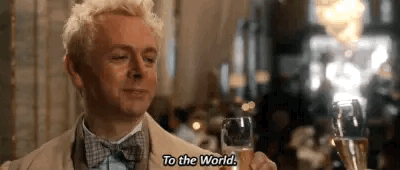
disability as beautiful and innate to existence: Disability is represented amongst angels by the extremely cool Saraqael and by diversely disabled unnamed angels in the Job minisode. Representation of disability is obviously super important in its own right, but is also queers what we perceive as aesthetically and ontologically "normal". Male gaze teaches us that youth and (physical and mental) health are the desirable standard and everything else is to be seen as a deviance, a mistake. By including disability among the angels, beings that have existed before time and space, the show clearly states that disability is a beautiful and innate part of existence.
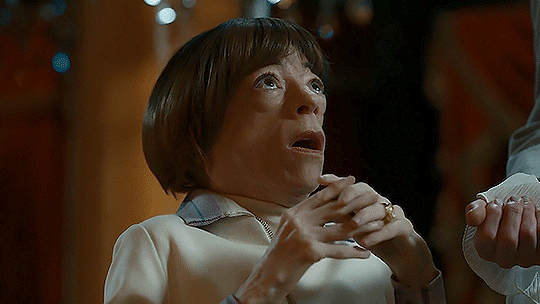
gender is optional/obsolete: Characters like Crowley, Muriel and others really undermine the (visual and aesthetic) boundaries of gender and the black-and-white thinking about gender that informs male gaze. Characters cannot be identfied simply as (binary) men or women anymore just by looking at them or by interpreting their personalities or behaviors. Most characters in GO, and especially the more genderqueer ones, display a balance of feminine and masculine traits as well as indiosyncracies that dissolve the gender binary.

Feel free to add your own thoughts on this in the comments or tags!
#good omens s2#good omens#good omens 2#go2#good omens meta#ineffable husbands#crowley#aziraphale#queer#queer TV#male gaze#thank you neil gaiman for cranking up the queer#neil gaiman#thank you neil gaiman
2K notes
·
View notes
Text
Alternative names for humanity along the lines of "Homo sapiens" (Wise man) and "Pan narrans" (Storytelling Chimpanzee) that I'm too lazy to look up/make up Latin for:
chef ape
throwing ape
walking ape
The idea being that we're apparently unique in the animal kingdom in that we cook our food, so we're the Chef Apes.
We're also one of the best animals at throwing things: humans have more accuracy and strength when throwing stuff than other apes, by a long shot
And apparently our ability to walk slowly for ages was key to our early survival as persistence predators. We can't outrun a gazelle or mammoth or whatever, but we don't tire easily and so we can just keep following it until it runs out of stamina
Pan basipila: the baseball playing Bonobo
If only baseball had a cooking element, it would be the perfect Human Sport.
We need to devise a sport where you cook something, follow someone for a long time, and then throw it at them.
The most human thing is the surprise pie to the face
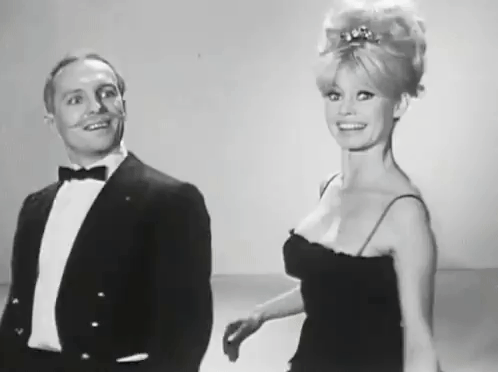
Also as much as I like Terry Pratchett's suggestion of "Pan narrans" I wouldn't be surprised if we turn out to not be the only animal that tells stories...
Elephants. I bet elephants do.
Like, there was that case where an injured elephant went to a ranger station for help. One it had never been to before, but other elephants had.
The theory being then that some other elephant had told this elephant "hey if you're hurt, go here, the humans will help"
That, combined with how they have burial rituals (some which might indicate there's an elephant religion!), and that we're working on figuring out how elephants communicate...
It wouldn't surprise me if we learn sometimes in the next decade or two that "oh yeah, elephants tell stories too. They've got FICTION."
So "Pan narrans" isn't what I'd want to bet on as our uniquely human thing.
But at the end of the day, maybe the whole idea of there being a uniquely human thing is, in itself, just another story we're telling.
So maybe it is a good fit after all.
But I especially like the idea that we're the Baseball Ape because I have this image in my head of a galactic council of aliens. Some angry alien who looks like Cthulhu had a baby with a spider has the floor, and they're ranting about "why do the Hu-mons deserve a seat?"
The Crogath are stronger, the Eldru are smarter, the Cybernetic Essense lives longer, the Dromans go farther and faster, the Moltriri have us beat in fiction and poetry, what is so special about these damn bipedal fleshbags that makes them unique in the universe?
And then WHAM.
Right between the eyes. A handheld translator device, a bit bigger than a modern smartphone, beans the speaker out of nowhere.
And there's an (untranslated) yell in the chamber as the prime representative calls for order.
"WE CAN THROW, MOTHERFUCKER!"
(it takes a while to properly explain the insult. Crogathi (especially drones) don't really have mothers or sexual reproduction, so they don't really get why that would be an insult. It's finally translated as something like "bud-biter")
and it's true.
even after the World Series becomes the Galactic Series, no non-human team ever manages to win.
The Eldrul Librarians almost make the cut in 2486 but accidentally piss off the ghost of Colonel Sanders and end up inheriting the Hanshin Tigers' curse.
alien textbooks describe The Colonel as some kind of human patron deity of baseball and cooked avian food, who should not be disrespected at all costs, or his vengeance from his place beyond the grave will be swift and punishing
(they're right)
"Look, we can't PROVE he was why Gemini Noctis went supernova unexpectedly, but given the protests that had happened right beforehand, and the incredible powers ascribed to the human spirits, do you really want to risk it?"
the funniest possible future:
humanity gets a key place in galactic politics because we're never able to adequately convince the universe at large that our ghost stories are just that, stories, and they're terrified shitless that we'll unleash spectral torment on them
"humans? look man, living humans are a pushover. you can easily rip them in half, crack their planets with a quark bomb, their ships are little more than tin cans with a tachyon drive taped on the side. but it's not the living humans you have to worry about... it's the ghosts."
"humans are a bit like the Nontilek, with a two-stage lifespan, a grub and an adult. What you think of as "adult" humans is just their infant stage, and they only fully transform once they "die". Once fully hatched into Ghost form, their powers are almost limitless."
you want humans off a colony planet and bomb them from orbit? good luck, now you have a few million ascended humans who can pass through solid matter and can't be killed, and they will never rest until you and your descendants are gone or dead.
you don't believe me? look at this: One of their most popular stories is about them building an empire that spanned a large chunk of their little planet, then having it MURDER THEIR OWN GOD.
It only worked for a few revolutions, and he just came back, promising that one day all of them would join him in the next phase of their lifespan.
They still, to this day, thousands of orbits later, erect little statues of the means they used to execute their deity.
not even the Crogathi, who literally worship death itself, tell stories that frightening to their newly hatched grubs.
Humans are scary, man, stay away and just give them whatever they want.
the rest of the alien's education on the dangers of humans is just a selection of human movies.
the sixth sense, poltergeist, ghostbusters, the shining, the devil's backbone, and, of course, field of dreams.
ghosts AND baseball?
it's everything they're scared about humans all in one package!
the obvious twist you could do, of course, is simple:
the aliens are right.
humans are a two-phase species where the elder form has immense power but leaves communication and decision making to the younger form, which will be confused and angry if you acknowledge the presence of their elder-stage members among them.
this often leads to them cutting off contact or their elder-stage members causing immense damage through seeming "accidents" on the contacting vessel. This is believed to be some kind of religious prohibition that they are not able to explain.
so it's official contact protocol to pretend you cannot perceive the elder-stage humans among them, and to give them what they want to avoid possible retribution.
No means to combat elder-stage humans has yet been found, and the limits of their power is not known.
All alien captains are required to study the fate of the SS Ennolon, which contacted a lone human craft in the galactic year of 12,783. They had initiated contact and were getting along fine, until the human showed the Droman captain a picture of their "late father".
Captain Droless, accounting for the difficulty in telling humans apart, then pointed at the father sitting in a chair nearby and said "That is them, correct?".
The human looked at the chair, reacted in confusion, then anger, and asked the contacting crew to immediately leave.
It was another 400 cycles before contact could be reestablished between the Droman Federation and the Human Alliance.
the intergalactic guide describes humans as a powerful race of immortal energy beings who have the strange habit of sending their larvae out on missions around the galaxy, occasionally contacting other races, but refusing to acknowledge their elders, except in stories
they seem to frequently put their young in dangerous situations without lifting a hand to help, so this is suspected to be some sort of pilgrimage or coming-of-age ritual.
(From a twitter thread on October 1st, 2022)
398 notes
·
View notes
Text
THREES THREES THREES:
Oh hello. I want to talk about the stylistic/textual role of Threes in The Raven Cycle.
Threes – as a general concept and as a number – are a major symbol and motif in the series. Maggie tells us that threes are important from the very first book: from Maura’s favorite saying being “good things come in threes” to Persephone telling Adam that “things are always growing to three or shrinking to three,” threes are discussed at length in the text of the narrative. Maggie also shows us that threes are important as a motif/symbol for important aspects of the story: three Raven Boys, three Fox Way women, three Lynch brothers, three main ley lines, three sleepers, etc. Threes are, textually, incredibly significant in The Raven Cycle, and we know this because we are shown AND told it throughout the entirety of the books.
We all know the significance that is given to threes in the story itself, but what I want to talk about is the usage of a thrice-repeated word or short phrase (going forward I’m referring to this as “Threes” or “a Three”) as one of Maggie’s writing signatures (across the series, there are 65 Threes). This creates a meta level to threes being an important aspect of The Raven Cycle universe. A classic example of a Three (one of my favorites, in fact) is from The Dream Thieves:
“As they walked, a sudden rush of wind hurled low across the grass, bringing with it the scent of moving water and rocks hidden in the shadows, and Blue thrilled again and again with the knowledge that magic was real, magic was real, magic was real.” (TDT, 12)
In a way, the Threes join the intradiegetic (what is happening within the narrative itself) with the extradiegetic (what the narration is communicating solely to the reader). The reader and characters are told explicitly that the number three is significant, important, notable, and powerful. In using Threes as a writing signature after giving the reader that information, the Threes are designed to signal to the reader that this line, this moment, is important.
So the question is: What Are The Threes Trying to Tell the Reader???
Amazing question.
In my recent TRC reread, I was already keeping track of Threes, because I was curious to see how many times they appeared. And then my sister, who was also rereading, said something interesting (after reading this Three from The Raven Boys):
“He was full of so many wants, too many to prioritize, and so they all felt desperate. To not have to work so many hours, to get into a good college, to look right in a tie, to not still be hungry after eating the thin sandwich he’d brought to work, to drive the shiny Audi that Gansey had stopped to look at with him once after school, to go home, to have hit his father himself, to own an apartment with granite countertops and a television bigger than Gansey’s desk, to belong somewhere, to go home, to go home, to go home.” (TRB, 370)
My sister said: “Adam’s like Dorothy.” And then she said: “Wait. Do you think the Threes are like a spell? Or… a wish?”
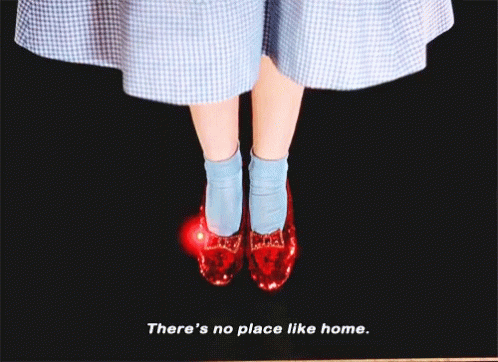
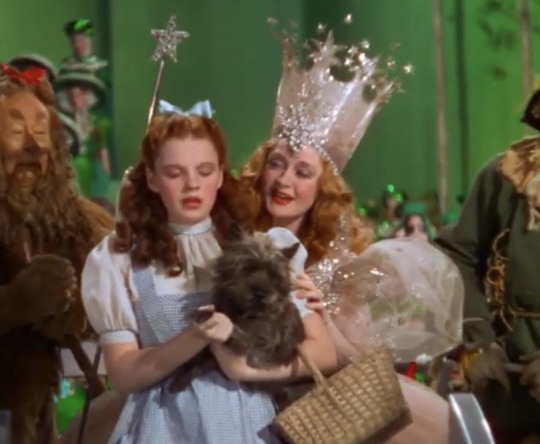
Which was……. Interesting.
What I have determined, after completing my reread and spending way too much time analyzing this, is that a Three is either a wish, a hope, a longing, a prayer – or, alternately, a warning, a curse, a negative promise.
In either sense, Threes are a foreshadowing of what is to come – whether it be good or bad. Threes exist to signal to the reader that they should be paying close attention to whatever is being said or observed.
Threes in….. Everything Else:
Before we get too far into TRC Threes, let’s talk about the precedent for three being an important number in art, math, storytelling, etc. I found some interesting information about how three is a satisfying number for the brain:
Grouping things in threes leverages the power of repetition to aid memory; denote emotional intensity or importance; and ease persuasion (research by Shu & Carlson (2014) found that three positive claims is the most effective for persuasion).
Three is the smallest number that the brain can still recognize as a pattern, and the brain loves pattern and repetition. This is true in visual art – having three main compositional figures to create a pleasing image – and also in storytelling and narrative. Using threes for repetition in storytelling is a very common occurrence.
Some classic examples of repetitive threes are Shakespeare’s “tomorrow and tomorrow and tomorrow” or Lincoln's “a government of the people, by the people, for the people.” In each of these examples, a repetition of three is used to create pleasing auditory rhythm. There is something inherently memorable about literary Threes.
Perhaps the most interesting information I found while digging into the precedent for threes is about the rule of threes in folktales. This information happens to come from Wikipedia (side note: Wikipedia is a modern tool of collective consciousness and we should utilize it more). This page describes how in its most basic form, the rule of threes in storytelling is just beginning, middle, and end. Because this is such a common convention, writers tend to “create triplets or structures in three parts.” It then talks more directly about the use of threes in folktales:
“Vladimir Propp in his Morphology of the Folk Tale, concluded that any of the elements in a folktale could be negated twice so that it would repeat thrice.”
This is especially interesting to me. The idea that an element of a folktale “could be negated twice so that it would repeat thrice” shows up prominently in the plot of The Raven Cycle – a book that is heavily influenced by folktale motifs – but also in so many of the folktales/fairytales we all know. A classic example of this would be Goldilocks and the Three Bears – Goldilocks must try porridge that is too hot, too cold, and then, finally, just right. The journey of these three actions is satisfying to the brain because it is a complete pattern: the third and final result of “just right” porridge is only satisfying because of the two “not right” porridges that preceded it.
Getting back to Stiefvater Threes:
For anyone who’s seen The West Wing (and even those who haven’t), here’s a good way to explain what I think the Threes are doing. You know that thing they do during a The West Wing “walk and talk” where two characters will be throwing information and little quips back and forth at each other rapid-fire, and then suddenly, they will both stop walking, and the camera will stop moving, and they’ll say a line that contains really important information that you need to know to understand the storyline of that episode? That’s what Maggie’s Threes are doing for the reader. That’s what 6:21 is doing for the characters. It’s intentional: the writers/directors/actors/camera operators on The West Wing know that they’re throwing a lot of information at you, and know that they need to get you to pay attention to the most important parts somehow, so they do it by forcing the viewer to lean in and listen. It changes the focus and energy of the scene from something with momentum to something that pauses, and therefore makes you pause.
The Threes compel the reader to pause and consider the information being delivered as more important than they might consider it if it was not written as a Three. “Maura’s expression was dark” does not read the same as “Maura’s expression was dark, dark, dark.” And in a text where characters directly state the magical importance of threes, compounded by three as an overarching motif, there is clear intention and meaning behind these written Threes.
In the context of TRC, Threes act as a fourth-wall break.


They are essentially a way to poke the reader and say: “Are you paying attention? Because you should be.”
These Threes use a symbolic motif – the rule of three – that is already heavily discussed in the text – to get the reader to pick up on the internal motivations of the character who is “wishing” their Three or the narration which is using a Three to foreshadow some important aspect of the plot.
The Threes are like the literary equivalent of a record scratch. It stops you in your tracks, breaking the established rhythm and making you take notice of what is being said in a new way.
Let’s Look at Some More Threes (but just a few don’t worry)!
1. We get a classic Three, and a very Gansey Three, right after the group comes out of Cabeswater:
“‘What about that thing in the tree?’ Blue asked. ‘Was that a hallucination? A dream?’
Glendower. It was Glendower. Glendower. Glendower” (TRB, 231).
Finding Glendower is one of Gansey’s core wishes, one of his core longings. Although this line is a literal answer to Blue’s question – he saw Glendower in the tree – in making it a Three, Maggie has given it added weight and meaning. It is prayer-like in its intention. It is almost an incantation: by saying it in Three, Gansey wishes it into being.
2. In The Raven Boys, after Gansey has bribed Pinter to keep Ronan at Aglionby and has learned that Noah has been dead the whole time they’ve known him, we are given this Three:
“The Pig exploded off the line. Damn Ronan. Gansey punched his way through the gears, fast, fast, fast” (TRB, 311).
This moment foreshadows what directly follows: a distinct lack of fast as the Camaro breaks down and Gansey is held at gunpoint by Whelk. This Three is not a prayer, but a warning, and an indicator to the reader that something important is about to happen. Had Gansey not been trying to go so “fast fast fast,” the car might not have broken down; because the Three incanted it, disaster follows.
3. To return to a Three I have already mentioned, but follows the typical Three structure:
“...to go home, to go home, to go home” (TRB, 370).
In this scene, Adam’s wish is less about actually wanting to return to his literal home, because his house was never really a home for him. Adam’s wish/longing is for a home that he could return to, that he would want to return to. He is longing for a place/feeling/experience that does not exist for him. The Three in this sentence comes after a string of active wishes/longings, and by ending with this Three, it casts a spell of sorts, honing in on the truest underlying wish that Adam has. In using the phrase “to go home” three times, the narrative is making sure you, the reader, know that this want, this need, this wish, is the most Important to Adam, and will drive his actions for the rest of his story.
Most of the Threes feel like this. They are often tacked on at the end of a sentence or embedded in a sentence. They’re an addendum to the action of the story. They’re like casting a spell – once to manifest, twice to charge, three to cast.
…..And Some Other Types of Threes:
Then there are the Threes that don't follow the typical pattern of the same word repeated three times one right after the other, but are still a Three in a different way.
There are short phrases/sentences that are repeated three times throughout a page or chapter. In the prologue of The Raven King, we get this:
“He was a king…
He was a king…
He was a king.
This was the year he was going to die.” (TRK, 1-3)
In this case, the Three acts as a promise of Gansey’s kinghood, but in ending the sequence with “this was the year he was going to die,” the promise of the three is given a condition: it is not going to be a joyful kinghood, but instead a kinghood intertwined with the death we’ve known is fated for Gansey.
One of Adam’s Threes from Blue Lily, Lily Blue, uniquely breaks the mold of Threes in a format that does not appear anywhere else in the four books:
“It was his father.
He opened the door.
It was his father.
He opened the door.
It was his father” (BLLB, 242).
❋ (We’ll talk about this one more in-depth later.)
There are also a few “unfinished” Threes:
In The Raven King when Ronan is having a nightmare (infected by the demon) about Matthew and the mask, he has this Three:
“Ronan’s throat was raw. I’ll do anything! I’ll do anything! I’ll do anythi
It was unmaking everything Ronan loved.
Please” (TRK, 96).
With the uncompleted Three, there is an uncast wish. Ronan’s wish is about Matthew, yes of course, but also about being willing to do anything to keep those he loves (ie. Adam, Gansey, Blue, his brothers) out of the reach of the “unmaking.” This unfinished Three serves to foreshadow the harm that does ultimately befall first Adam and then Gansey as a result of the unmaking of Cabeswater by the demon: without the Three spell completed, his wish is not fulfilled.
*This is Not all the uncommon/mold-breaking Threes, just a few that are interesting!
Do All Threes Come to Fruition???
The short answer is: No. Or at least not in that way.
Once again looking at the text of The Raven Cycle, we are given an answer of sorts. In discussing Gansey’s predicted death, Maura says:
“First of all, the corpse road is a promise, not a guarantee” (TRB, 155).
This seems to apply to Threes as well. Threes are not a guarantee. They are a promise. Not all Threes come to fruition the way one might expect – or at all, for that matter. The important part of Threes is not that they will definitely come true, it’s that they could come true, because the Three gives them the potential to come true.
Structure, Structure, Structure:
The main Threes structures are:
Three of the same word separated by commas:
“magic, magic, magic” (TRK, 59).
A short phrase/sentence separated by periods:
“My father. My father. My father” (TDT, 369).
A short sentence that is repeated three times throughout a page/paragraph:
“Gansey did not breathe…
Gansey did not breathe…
Gansey did not breathe” (TRK, 209).
A word that is repeated three times and is connected by “and”:
“Round and round and round!” (BLLB, 224)
Italics vs. Non Italics:
Italics in The Raven Cycle are often used for character’s inner thoughts/anxieties. This continues to be true in the context of Threes. A Three that is not written in italics indicates a promise, or some foreshadowing of a plot point being foretold through the Three – it is typically more “real” – whereas a Three that is written in Italics seems to indicate a wish/hope/longing that is unattainable in some way. Italics almost always indicate a Three that may never come to fruition, or at least not in the way the character hopes it will.
An example of this distinction can be found in chapter three (hah) (I don’t believe in coincidences and neither does Gansey) of The Raven King:
First we are met with Ronan wishing/hoping to return home:
“That morning, Ronan Lynch had woken early, without any alarm, thinking home, home, home” (TRK, 24).
This home, home, home, is in reference to the idea of home rather than the reality. Ronan is wishing to return to a home that does exist physically, but is not the same as in his memory – he wants to be at the Barns as it was in his childhood.
Then, in the very same chapter, Ronan actually returns home and we are given this Three:
“Slowly his memories of before — everything this place had been to him when it had held the entire Lynch family — were being overlapped with memories and hopes of after — every minute that the Barns had been his, all of the time he’d spent here alone or with Adam, dreaming and scheming.
Home, home, home” (TRK, 27).
This second home, home, home, is about the actual reality of being in his childhood home – the good and bad that has existed in the years since the childhood he longs for.
The Addition of AND:
The most notable use of “and” is in Noah’s very last chapter:
“Sometimes he got caught in this moment instead. Gansey’s death. Watching Gansey die, again and again and again” (TRK, 416).
When “and” is added into a Three, it becomes circular, cyclical. The “and” gives the Three a sense of infinity, or creates a loop of sorts.
This Three operates in the same way “tomorrow and tomorrow and tomorrow” does in Macbeth – it is meant to convey the endlessness of time, a relentless cycle of tomorrows.
❋ While there are not many of these Threes with “ands” in The Raven Cycle, there are other examples of Threes or Three-like occurrences that fulfill the same purpose as the “and.” For example, remember this Three:
“It was his father.
He opened the door.
It was his father.
He opened the door.
It was his father.” (BLLB, 242).
In this case, instead of the word “and,” the Three (It was his father) is connected by “he opened the door.” This Three is accomplishing the same feeling as “again and again and again” – the feeling of being caught in an endless loop.
Another example of an (implied) “and” in The Raven Cycle is: Gansey’s life. Gansey starts out alive and then dies as a child only to be reborn, and then killed again through his sacrifice, and then reborn for a final time. Gansey is Alive, Dead, Alive, Dead, Alive. And so Gansey’s life is a cycle of Three.
As with the Threes that contain “and,” Gansey starts where he ends: alive.
Other Ways Threes Show up in The Raven Cycle:
I will state the obvious once again: there are three Raven Boys, three Lynch brothers, three Fox Way women, three sleepers, three main ley lines (the lines that “seem to matter” to Glendower’s story), Gansey the Third (Gansey Three, Dick Three).
There are also the more obscure: the “three kinds of secrets” in The Dream Thieves prologue and epilogue; each Lynch brother inheriting three million dollars from Niall Lynch; the three figures with Blue’s face on the tapestry and later as a vision in Cabeswater; Adam and Gansey going to DC for three days; the shield pulled from the lake having three ravens embossed onto it; Ronan having dreamt Matthew at the age of three; the door to the Demon’s room needing “three to open” it; Aurora Lynch staying awake for three days after Niall died.
And of course, we have the ley line symbol/chapter header:

And then there are the 300 (three hundred!) Fox Way “villain” readings. (This was something that was particularly interesting to me.)
The first antagonist we meet is Whelk. When he comes for a reading at 300 Fox Way, he first pulls the Three of Swords.
When the women all draw cards together, they pull identical cards for Whelk: three of the Knight of Pentacles, then three of the Page of Cups. After drawing, essentially, three threes (the Three of Swords, then two sets of three matching cards) in this reading, the first Three of the entire series appears:
“Maura’s expression was dark, dark, dark” (TRB, 124).
The second “antagonist” we meet is the Gray Man, who comes to 300 Fox Way in The Dream Thieves to “observe.” Maura, Calla, and Persephone are predicting which card is on the top and bottom of the stack and the first card, predicted by Calla, is the Three of Cups off the top of the deck that Mr. Gray is holding (a remarkably happy card in stark contrast to Whelk’s Three of Swords).
When the third antagonist, Greenmantle, comes for his 300 Fox Way Reading he also draws the Three of Swords. The fact that each of the three antagonists come for a reading is in itself a sort of Three, but to further the importance of these moments, each of them draws some sort of three-related card.
All of the examples I have touched on have been more symbolic references to Three as a motif of the books as a whole. However, Threes also show up in the literal number of times important quotes are said/written.
I was tracking some of the most well-loved TRC lines to compile them, and noticed that the lines “don’t throw it away” and “safe as life” happen to appear exactly three times throughout the series. This was honestly pretty surprising based on the importance of those quotes – I would have assumed they showed up far more. Actually, they both appear twice in The Raven Boys and once in The Raven King. Threes, and the importance of Threes, is embedded so strongly into the narrative of The Raven Cycle that even the quotes we all think of as the most beloved of the series follow this rule of Threes.
Now, could you chalk some of these up to coincidence? I guess. But Gansey doesn’t believe in coincidences so I don’t either. So what’s the point of all these Threes?
Conclusion???
In a literal, literary way, Threes are a fourth wall break to make the importance of a moment obvious, but I’m not sure what the larger “point” of Threes is. My best analysis comes from the idea of The Raven Cycle being all about time and Threes playing into the importance of time as a sort of record scratch or loop. The Threes, as a stylistic, written motif, seem to connect the time-based cycle the characters experience to the time-based cycles the reader experiences by reading the books.
But my conclusion feels incomplete and so I would like to rely on the collective for this one – just about the most Raven Cycle thing you can do. So I’m asking you, the collective you, what conclusion would you draw? What do you think?
What I do know for sure is that Threes are magic, magic, magic.
For Your Convenience: Here is the textual significance given to threes within the books (chronologically):
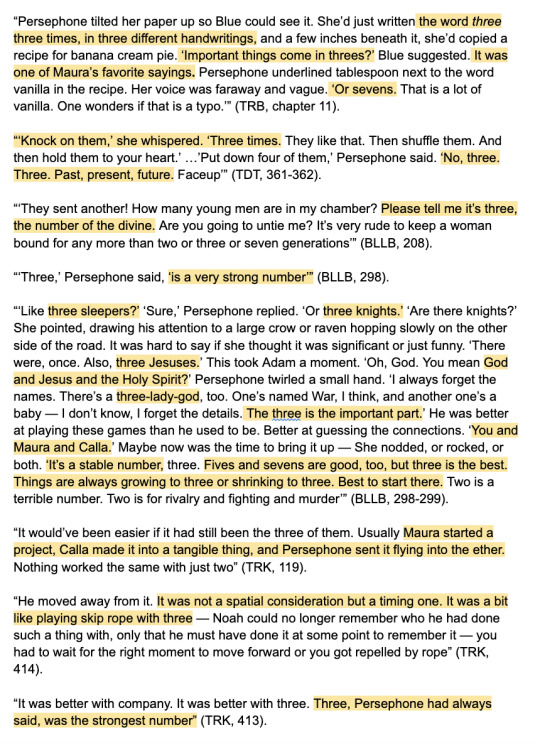
And here are the Threes, Threes, Threes (compiled):


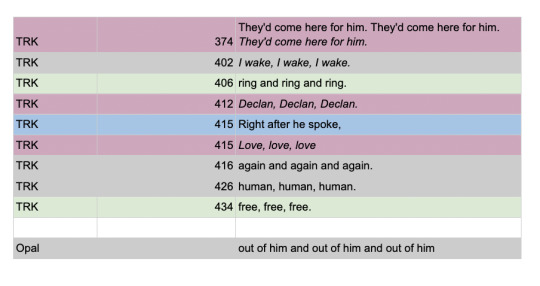
(If you made it to the end of all this, I love you. Have a gold star and a hug <3)
#sorry for the aggressive caps lock i wrote this in google docs#wow this is embarrassing#i'm okay with it#i spent my break writing a 16 page paper#the ganseyism of it all#some people asked for an essay so blame them not me#trc#trc analysis#maggie stiefvater#the raven cycle#the raven boys#the dream thieves#blue lily lily blue#the raven king#the gangsey#blue sargent#richard campbell gansey iii#ronan lynch#adam parrish#noah czerny#gangsey#mine
174 notes
·
View notes
Note
hiii i saw ur lucifer post and u talked about the brothers having a role in their family, can u elaborate??
Of course! I'd be all too happy to explain!
Note: I'm not an expert on this topic obviously, but I do a lot of research on personalities and character archetypes to help build my stories, so it's something I always have on my mind!
I highly recommend doing research into this on your own (if you're into this type of thing).
Warning: This response might get kind of lengthy, I apologize. I've got a lot of thoughts, but I'll try to break it down as best as I can. Also warning for potential Shall We Date and Nightbringer spoilers.
So, in writing and storytelling, it's commonly told that there are 12 different character archetypes. Those being:
The Lover: Led by the heart/emotions.
The Hero: Overcomes a challenge to save the day.
The Magician: Masters the ways of the universe to use for good/evil.
The Outlaw: Fights against society/control.
The Explorer: The curious one that seeks beyond what they know.
The Sage: The wise one to guide or advise.
The Innocent: Morally pure, naïve.
The Creator: Someone with ambitious goals for their creations.
The Ruler: One with power/influence over others.
The Caregiver: Protects and sacrifices for others.
The Everyman: The most relatable to the common man.
The Jester: The comic relief, but also known to drop heavy truths when it matters.
So, we have 12 characters in Obey Me (not counting the three new additions) and 12 archetypes. And even just glancing over them all, it seems to fit everyone almost perfectly. Of course, most of them are mixes of several different personalities, but all-in-all, from a writing perspective, they all fit into their assigned slots. Also, everyone might have their own differing opinion on where they fit, but these are my personal evaluations of each character.
Starting from the most obvious, we have:
Mammon: The Jester. Clearly written as comic relief in the games. Clearly the jokester of the family. Tougher moments in the game are often diluted by making a jab in Mammon's direction. However, like in many old plays, the Jesters are often the ones that come in and tell the characters or the audience the hardest truths. Mammon has been one of- if not the most- honest characters in the game. And despite being comic relief, it's clear he's got a firm head on his shoulders when it really counts. He is needed to help his family get through tougher times, and he knows how to have fun and make his brothers smile, even if most of it is written at his own expense.
Luke: The Innocent. Most characters in this archetype tend to be children, so he naturally fits that role. He's young, unaware of what the world is really like. Sticking to what he's been taught, afraid of the unknown, and in need of constant guidance.
Satan: The Explorer. Even from the moment he was first created, he knew he wanted to know more about the world around him. He felt there was more to him than his Wrath, more to the world than just what he can recall from Lucifer's memories. His entire character is based around his pursuit for knowledge, his drive for getting out there and exploring and learning about anything he can. He doesn't want to be confined to the label he was made out to be. He's always seeking something else.
Barbatos: The Magician. Even from the very beginning of Shall We Date, we all knew there was more to the butler than it seemed. He's extremely powerful, extremely intelligent, and if he's not quite all-knowing, he's surely as close to it as it gets. Without a doubt, he has mastered his powers, only turning them 'off' or restricting their use at the behest of Diavolo. When everything else fails, Barbatos is usually the one to save the day.
Belphegor: The Outlaw. This type fits him more so in Shall We Date rather than Nightbringer, but I still think he's the best fit for this role. The rebellious youngest, doing everything he can to fight against Lucifer and to get his own way. Plus, of course, the whole bit about quite literally wanting to fight his family and Diavolo for his opinions on the human realm in the first game. He's also Sloth, so no matter what situation he might be in, even if he agrees to do it, he's not going to do it 100% willingly. Or, at least, get some compensation out of it.
Solomon: The Sage. Even though MC being Solomon's apprentice is on the newer side of things, even in season 1 of Shall We Date, Solomon was always giving us little tidbits of advice. He's human, MC is human, he was always guiding us in the proper direction, even if interactions were minimal at the very beginning of Shall We Date. Now, in Nightbringer, the Sage role has come in full force. He's our guide, teacher, human companion, time-traveling confidant, he's it all. Plus he's chock full of the vague mysticism that Sages seem to have in fiction.
Asmodeus: The Lover. I know, it seems cliché, but I had to do some hard thinking before I put Asmo here. If you take away the word "Love" and focus on the aspect of being controlled by emotions, it makes sense. Now, I'm glad Nightbringer has given us a little bit more depth into his character rather than the peppy dramatic demon everyone knows him to be. Asmo is impulsive, almost as much as Mammon. He's caught up in the winds of trends and excitement, but more than that, he's not afraid to outwardly gush over his siblings. He craves love and acceptance, which we see more in Nightbringer, when he's worried he's only loved for his beauty. He's more compassionate than people give him credit for, and he craves that affection back.
Now, for the rest of them, the roles get a little more complex. They seem like they should be obvious, but I think they're a little more switched up than they seem (which is why I started talking about Lucifer's character in the first place).
Again, this is my personal opinion, but I believe that:
Diavolo: The Creator. Yes, he's a prince in title, and yes he's literally 'a ruler' but the trope doesn't quite fit him. When do we really see him demanding something? When do we see him utilizing his power to get exactly what he wants? Hardly ever. What has his entire goal been since the FIRST lesson of Shall We Date? To create a change. To cultivate a better world for all three realms. All of his actions, all of his power is going towards that goal, towards that ambition. This is the most important thing to him.
Lucifer: The Ruler. I almost put Lucifer in the caretaker role, but the ruler as an archetype is defined as a character with the biggest influence over others. Some sort of control or leadership that hinges on their actions an choices. Lucifer is the one who always has to lead the others and tell them what to do, even Diavolo, making sure the prince is keeping up on his own tasks. Even if he is not responsible for an entire kingdom, he is responsible for nearly everyone around him. For better or for worse, his character focuses around control, and all the pros and cons that come with it. He's the one with structure, the one with plans, the one that isn't afraid to say no or turn down ideas.
Levi: The Everyman. This might be completely subjective, but I believe out of every other character in Obey Me, Levi might be the most relatable. Video games, anime, tv, idols, figures, collecting, comics, manga, etc. He covers a wide demographic of things modern people enjoy. That's not even mentioning connecting to people on a mental level. Social anxiety, jealousy, low self esteem, stage fright, hyperfixations, panic attacks, stuttering, general neurodivergence, I know a TON of people in this fandom connect to Levi. Most of the time, he seems more human than even Solomon. A lot of the struggles he goes through are similar to what a ton of other people go through, and thus makes him one of the more popular characters.
Beel/Simeon: The Caregiver. I struggled with both of these two for a very long time. But eventually I came to the conclusion that they both exhibit the same character role. In Shall We Date, it was more obvious when they were in separate dorms, but in Nightbringer, I feel as if we haven't seen Simeon much at all. Both Beel and Simeon exist as characters to help others, and both have lost much because of it. They're both very giving and kind, and while they do of course have their own interests and selfish moments, most of their actions are for the better interests of others.
MC: The Hero. I originally wasn't going to put MC as an option, but it's true. We as the main character fill a role that would be empty otherwise. We are the ones constantly overcoming trials and challenges and overall doing basic protagonist stuff, so it's only natural that the best suited for the role is MC, whether it be yourself inserted or an OC that's been made. But seeing as it is an otome game, everything does revolve around our actions (even if most of those actions have been made for us).
NOW, a second thing I wanted to mention specifically about the brothers and their family dynamic. There is a second list I know of that focuses on a functioning group rather than individual character tropes. Which is what I was discussing in the post you are referring to. They exist better as a group, they are stronger as a group, and the reason why I think they fit together so perfectly as a family is because they all have their "roles" that keep them functioning.
The Driver/The Fun/The Energy: Mammon is always striving for something, always passionate about something. Even going so far as stealing things. He's the energy, the passion, the fire lit under his brother's feet. There's nothing that will stop him from getting what he wants, and I think that in turn encourages his brothers to do the same. Also, Mammon is the second oldest, he works in tandem with Lucifer to make sure his brothers are happy and safe.
The Organizer/The Structure/The Realist: This one is Lucifer. He's the one who keeps the others on task and in line so that the things that everyone is striving for can actually get accomplished. He's the straight and narrow that everyone must walk across, which can come off as rude or controlling, but most of the time he's the foundation that everyone is settled upon. He might be pompous, but he's reliable. Everybody knows that they're safe with him around. Which is essential to keeping everything together.
The Dreamer/The Visionary/The Design: Asmo definitely loves to come up with ideas. He's always trying to come up with something new for his family to do, something exciting, something fun. He works well with Mammon this way, which is why an extra firm hand is required on Lucifer's part to keep the whole thing from getting out of hand. He has an end goal in mind and knows exactly what he wants it to look like, even if he's not quite sure how to get there. He's sharing his dreams and hopes and projects with the others all the time, and a lot of them join in with dreams of their own.
The Pessimist/The Worrier/The Naysayer: While poor Levi might be an anxious mess and a self-proclaimed bummer, sometimes this can be a good thing. Of course, not when it's gone to dangerous extremes, but it's good in some circumstances to think about possible failures. Working on the other hand of Lucifer, they can both see the weaknesses in ideas or functions and come up with backup plans to ensure everything runs smoothly. Because he lacks the confidence to rush into things, he's able to more tactfully plan something out.
The Optimist/The Mediator/The Diplomat: Beel is often the one trying to quell fights between his brothers. Everyone has a special place in their heart for him and it works the same the other way. He knows how to use empathy to relate to all his brothers, and more often than not, he can work them into some sort of compromise. He fulfills a SUPER crucial role in this group/family dynamic and unfortunately he's one of the more underappreciated characters in the fandom.
The Brain/The Expert/The Researcher: Satan always brings his knowledge to the table. Even if Lucifer is implied to be more knowledgeable, the eldest's efforts are more focused on structure and order rather than education. Satan is more than happy to keep his brothers informed, and a lot of his brothers tend to turn to him for answers. And even if they come to a dead end, out of everyone, Satan is the most eager to do the research about the query they're facing.
The Unexpected/The Wild Card/The Outside Look: Belphie is a rather jack of all trades. Depending on what is needed in the moment, he is capable of fulfilling any of these slots. But more than that, he's the clever one that usually blurts out that out-of-pocket response that is the final key to the puzzle. He does things on a whim, when the mood suits him, but even so usually ends up being successful anyway. With him sleeping and (like in the first game) not being around his brothers too much, he can usually bring in a more outside perspective and catch things that the others miss.
(This was so long, I'm very sorry, but this is my full elaboration ^^)
#obey me#obey me shall we date#obey me nightbringer#obey me lucifer#obey me mammon#obey me levi#obey me satan#obey me asmo#obey me beel#obey me belphie#obey me diavolo#obey me barbatos#obey me simeon#obey me solomon#obey me luke
150 notes
·
View notes
Text
A (Negative) Review of Tom Taylor's Nightwing Run - What Went Wrong? Dick's Characterization
Introduction
Who is Dick Grayson?
What Went Wrong? Dick's Characterization
What Went Wrong? Barbara Gordon
What Went Wrong? Bludhaven (Part 1, Part 2)
What Went Wrong? Melinda Lin Grayson
What Went Wrong? Bea Bennett
What Went Wrong? Villains
Conclusion
Bibliography
In the previous section, we explored not only who Dick Grayson is and why he is so beloved by his friends, but why many people — including Taylor and others at DC — have a hard time understanding his character. By reducing Dick to a hero who is “good” and transforming into an “everyman” that anyone can project themselves onto, Taylor fundamentally removes that which makes Dick special, transforming him into a different character.
But there are other ways in which Taylor and DC mischaracterize Dick by erasing his history and transforming into a more “palatable” mainstream hero. That is what I wish to explore in more detail now.
Let’s begin by examining how Taylor’s framing Dick’s story in Nightwing (and that of the Titans in Titans) as a coming-of-age tale contributes to a grand erasure of Dick Grayson’s greatness.
In Taylor’s run, Dick is treated as if he were a new superhero. However, even if this run (not the entire title that started in 2016 with Rebirth, but just Taylor’s run) were to become a new stand-in for the 1996 Nightwing solo in which Dick arrives in Bludhaven for the very first time, Dick Grayson should not be portrayed as someone new to vigilantism. Even if one were to generously interpret Taylor’s Dick as being only twenty-two years old after starting as Robin at twelve years of age and only recently having become Nightwing, Dick would still have a decade of experience doing detective and hero work. It is notable that most of that decade was spent with him leading the Titans, serving as Batman’s partner and second-in-command, and mentoring numerous young heroes.
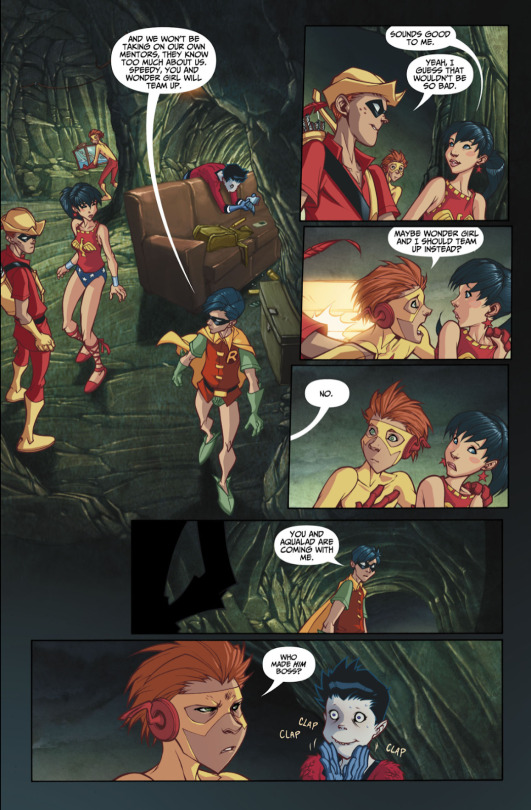
(Wolfram, Amy, writer. Kerschl, Karl, illustrator. In the Beginning… Part Three. Teen Titans: Year One no. 03, e-book ed. DC Comics, 2008. pp. 09)
One of Dick’s core traits is that he is a natural, if at times reluctant, leader. Many key moments in his character history are defined by Dick feeling the weight of the responsibilities placed upon him and having to push through his personal reservations for the sake of others.
Dick was the first child hero. He was the first sidekick. Out of universe and in universe. (In the introduction to Dick Grayson, Boy Wonder: Scholars and Creators on 75 years of Robin, Nightwing, and Batman, Kristen L. Geaman mentions that some argue Mister America from Action Comics #2 is, in fact, the first side-kick. However, this claim is debated since Mister America played more of a comedic and “Watsonian” role [as Dick Grayson Fan C suggested], and Dick was the one who popularized the formula of the role.) He was the proof that the concept of a sidekick — a partner — could work. Proof that kids could be trained into this life. Proof that they did not need powers in order to be a hero. That is one of the reasons why, in-universe, he is admired by so many characters – because he is the trailblazer who opened the doors for every young hero and side-kick that came after him. Dick’s history is also why he has so many connections — it is because he was the one who opened the doors for everyone else, mentored so many people, and partnered with those who were his age and those who were much older that he gained so much respect in the superhero community.
And yet, that history is called into question in Taylor’s narrative when he frames Dick as a young, new hero who is just beginning to assess what he wants to do with his life. Not only is it bad storytelling to portray Dick’s connections without factoring in the experience tied into them, it also demonstrates a fundamental lack of understanding of who Dick is, what he represents, and why he’s been so beloved for over 80 years.
This lack of appreciation and of respect towards Dick is extended to the other Titans in Taylor’s Titans (2023) run. As he himself pointed out, the first arc is called Out of the Shadows because, in his words, the Titans are “stepping out of the shadows of the Justice League.”
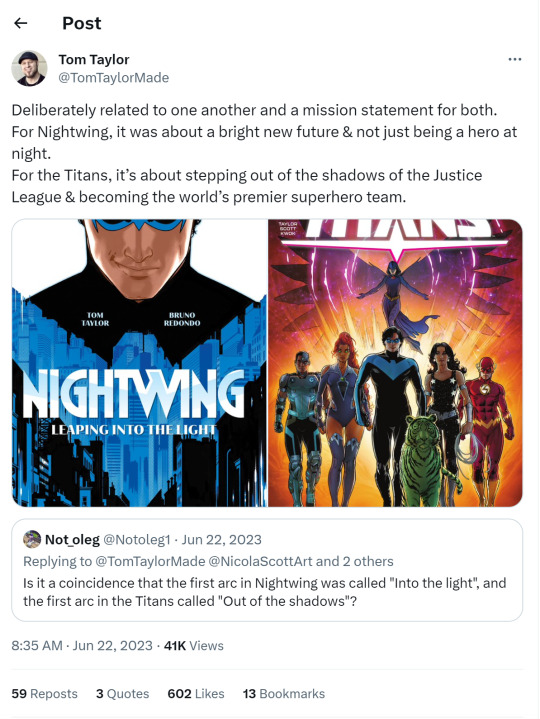
(Taylor, Tom [TomTaylorMade]. Twitter, 22 June 2023, https://twitter.com/jesswchen/status/1636971185782259716?s=20.)
And yet, to its fans, the Titans were never in the Justice League’s shadows. They were not inferior or subordinate to the Justice League, even if they may be less known. In-universe, the Titans may have modeled themselves after the Justice League and they may be allies, but the Titans are still an independent entity. From their very inception they defined themselves in contrast with how the Justice League operates.
In fact, in JLA/Titans #02, Dick himself draws this distinction when arguing with Bruce and calling him out on his condescending behavior towards the Titans.

(Grayson, Devin; Jimenez, Phil, writers. Jimenez, Phil; Brown, Eliot R., illustrator. The Generation Gap. JLA/Titans no. 02, e-book ed. DC Comics, 1998. pp. 23)
Trying to repackage Dick and the Titans as newbie heroes who are only now experiencing independence demonstrates a lack of understanding of their history and who the Titans are meant to be. The Dark Crisis and The Dawn of the DCU attempt to frame Dick’s Nightwing series and Titans as coming-of-age tales, where only now the characters are stepping into adulthood. Taylor’s writing goes a step further and portrays them as making rookie mistakes, coming across as newbies, and as a result, erasing all of the rich history that have built these characters into who they are today.
As I mentioned above, even if we generously interpreted that Dick never lived in Bludhaven before, Dick should still have plenty of experience being a hero and living on his own. The moment in which he transitions from Robin to Nightwing (willingly or unwillingly depending on your preferred Nightwing origin story) is Dick’s coming-of-age moment. By the time he comes to Bludhaven, Dick already knows who he is, what he wants, and he knows how to care for himself. By the time Dick comes to Bludhaven, his internal struggles are not that of a young adult who just left the nest and does not yet feel like an adult, but rather that of an adult who knows his own abilities and is confident in who he is.
And yet, in Nightwing #84, the first issue in Nightwing: Fear State, Taylor has Dick pondering on the responsibilities of taking care of Bludhaven. Right on the first page, he says “Fighting an entire corrupt system? Saving a whole city? There’s no training for that.”

(Taylor, Tom, writer. Rodriguez, Robbi, illustrator. Fear State Part 1 of 3. Nightwing: Rebirth. 84, e-book ed. DC Comics, 2021. pp 03)
Except even the most basic knowledge of Dick’s character shows that he was, in fact, trained to save an entire system and to fight a corrupt system — he was trained to care for Gotham and to take out the corrupt systems that prevail in that city. Not only that, Dick has also been Batman, at which point he was also Gotham’s main protector.
This mistake becomes even more outrageous when one considers that, though Taylor’s run is at times treated as a soft-reboot, Dick is still shown to have lived in Bludhaven while operating as Nightwing. This means that that generous interpretation I’ve been alluding to is not, in fact, compatible with the story as it is written. It is a falsehood, and therefore cannot be used to excuse the “new-in-town” approach Taylor uses when writing Dick.
Dick’s apparent inexperience and, frankly, incompetence, is further highlighted by the amount of times Dick is saved by others, or the amount of times when he is dependent on others to do the work for him. These instances include, but are not limited to:
The people of Bludhaven answering Nightwing’s call when Heartless sets the tent city on fire in #81

(Taylor, Tom, writer. Redondo, Bruno, illustrator Leaping into the Light Part 4. Nightwing: Rebirth. 81, e-book ed. DC Comics, 2021. pp 13)
Dick being knocked out with a single blow and then unmasked during his first attempt to investigate Melinda also in issues #81
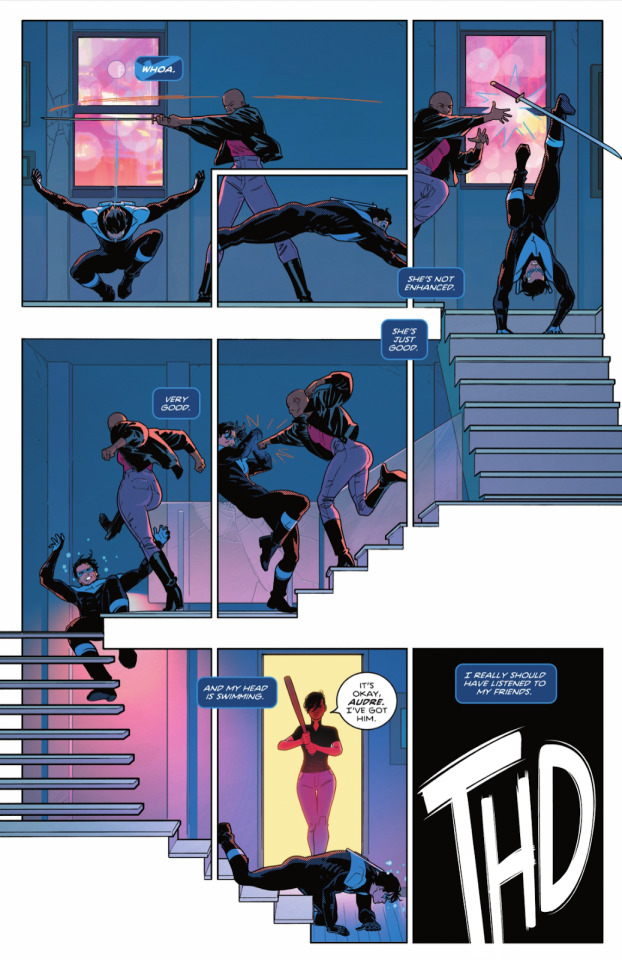
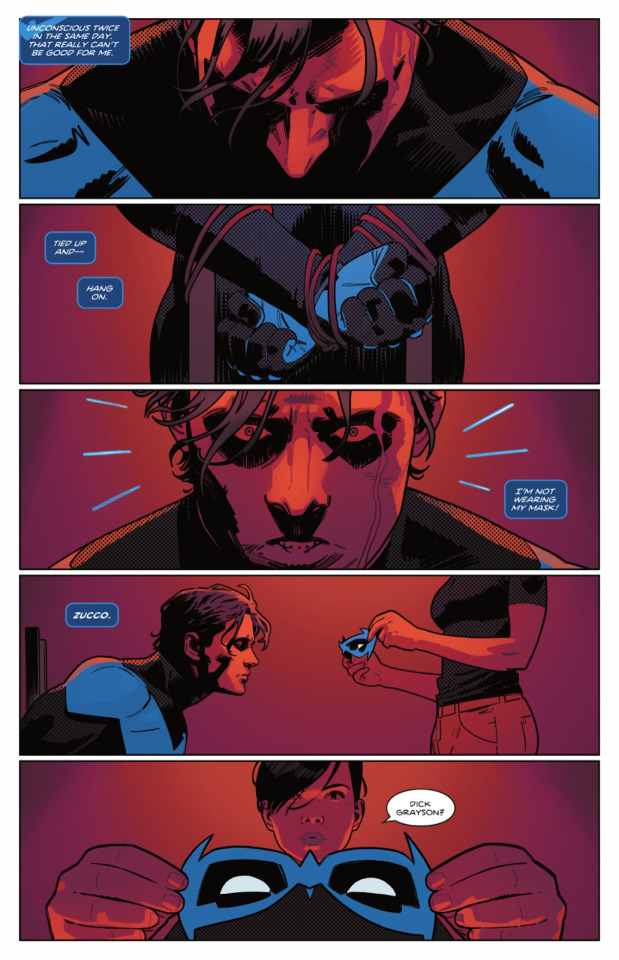
(Taylor, Tom, writer. Redondo, Bruno, illustrator Leaping into the Light Part 4. Nightwing: Rebirth. 81, e-book ed. DC Comics, 2021. pp 20 - 21)
Babs calling people to Dick’s rescue rather than trusting he could get out of it on his own in #82.
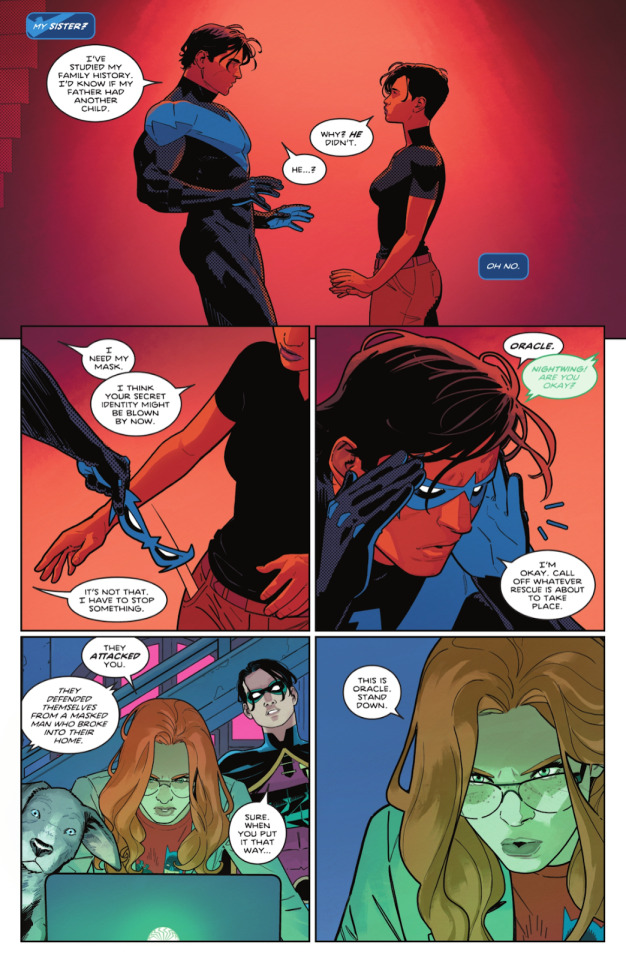
(Taylor, Tom, writer. Redondo, Bruno, illustrator. Leaping into the Light Part 5. Nightwing: Rebirth. 82, e-book ed. DC Comics, 2021. pp 03)
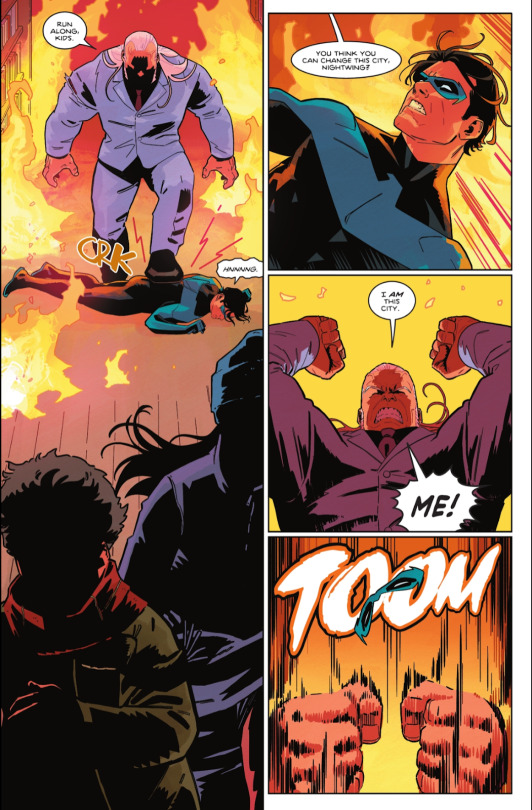

(Taylor, Tom, writer. Redondo, Bruno, illustrator. The Battle for Bludhaven’s Heart Part Four. Nightwing: Rebirth. 95, e-book ed. DC Comics, 2022. pp 24 - 25)
In #90, when his building blew up and Wally came to save him, then proceeded to force him to rest away from Bludhaven instead of letting him take action.

(Taylor, Tom, writer. Redondo, Bruno, illustrator Get Grayson Act Three. Nightwing: Rebirth. 90, e-book ed. DC Comics, 2022. pp 15)
And needing Babs’ help during a car chase in #106,
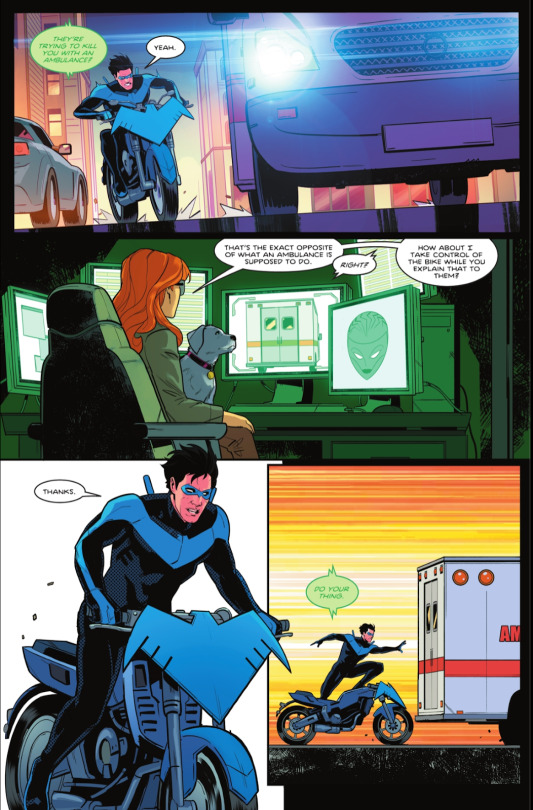
(Taylor, Tom, writer. Byrne, Stephen. The Crew of the Crossed Part One. Nightwing: Rebirth. 106, e-book ed. DC Comics, 2023. pp 16)
Which greatly contrasts how, in #113 of the Nightwing (1996), Dick handles a similar situation while simultaneously mentoring Rose Wilson.
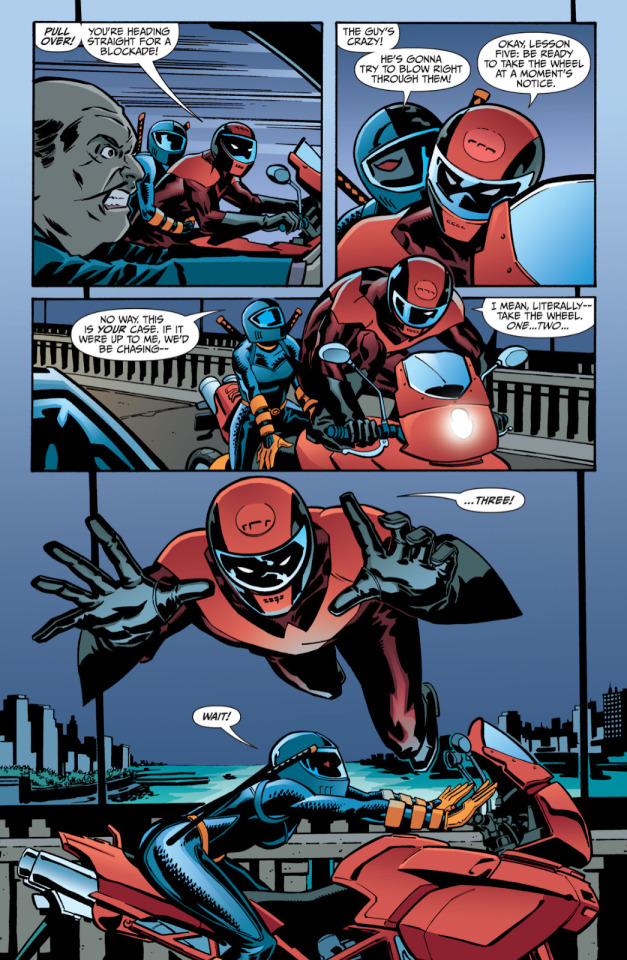
(Grayson, Devin, writer. Chian, Cliff, illustrator The Scorpion and the Frog. Nightwing no 113, e-book ed. DC Comics, 2005. pp. 19)
The thesis of Taylor’s run is that people need to rely on one another — we have to be each other’s safety net. And while that is an interesting theme to explore and one that certainly speaks to Dick’s history of doing things on his own out of fear of putting others in danger, Dick should still, more times than not, be able to do things by himself. After all, this is not an ensemble piece — this is Nightwing’s story and as his fans, we want to read about him. Cameos are fine. They can be fun, in fact. But cameos are different from Dick constantly struggling and needing help whenever he faces a challenge – the former portrays Dick as someone with powerful connections that deeply love him; the latter portrays Dick as being incapable of doing things without someone holding his hand.
This is another thing that Waid understands about Dick and portrays it clearly in World’s Finest. When Kara explains to Clark what first attracted her to Dick, she emphasizes how, despite the fact he had no powers, he could still save himself.
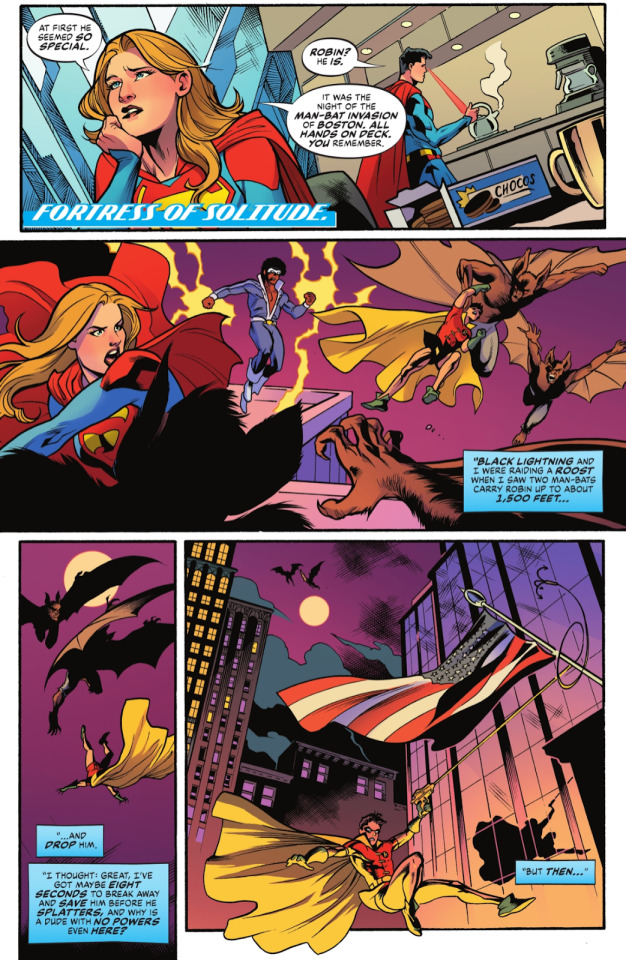
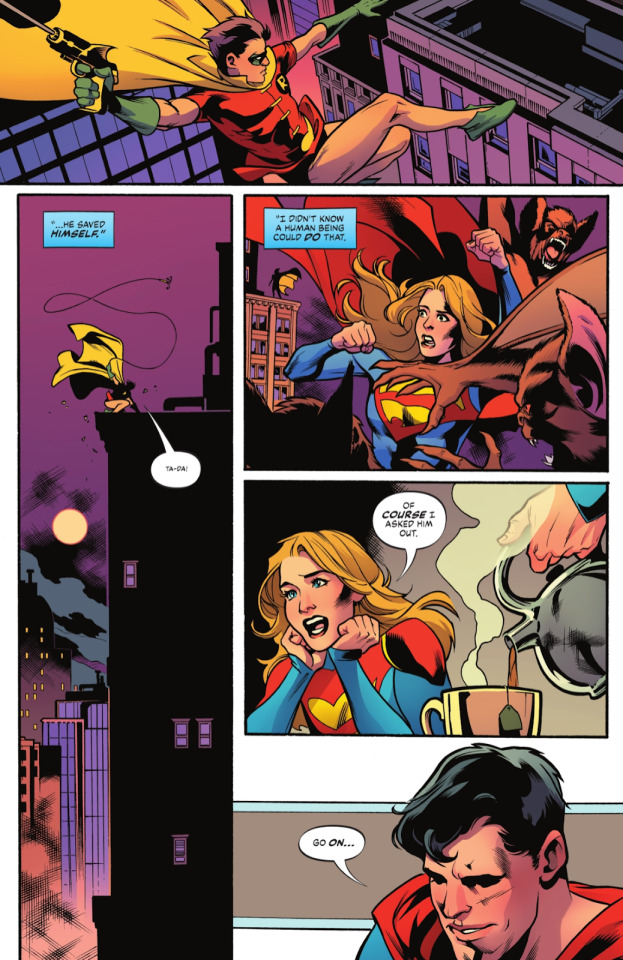
(Waid, Mark, writer. Lupacchino, Emanuela, illustrator. Scream of the Chaos Monkey. Batman/Superman: World’s Finest no. 12, e-book ed. DC Comics, 2023. pp. 06 - 07)
Being not just competent, but exceeding even the highest expectations is at the core of Dick’s character. And, as was pointed out in the previous section, it also serves to feed into his toxic perfectionism — he is one of the top tier heroes, therefore people expect excellence from him. Dick does not want to fail those who put their trust in him, and so he demands perfection of himself to the point of self-destruction.
Beyond that, we cannot give Taylor credit for trying to tell a story about Dick growing out of his perfectionist bad habits by learning to rely on others. After all, if Dick is constantly asking for help, then he is not resisting help. And that removes his chance for growth. A character arc requires development and change, which means one cannot start at the endpoint. Therefore, it cannot be claimed that Taylor’s intentions are for Dick to learn to rely on others, for he has been doing so without hesitation since the beginning.
As a result, the story is not about Dick being Bludhaven’s safety net while learning that he also has a safety net of his own, but rather about Dick always relying on his safety net, always knowing it was there, and having them also shoulder the responsibilities he took when he named himself Bludhaven’s protector. There is no room for Dick to grow because he is already at the end of his journey. And there is no room for Dick to be the hero of his story because others are constantly coming to his rescue when things get too difficult.
Once more, I must clarify that I’m not saying that Dick is not loved, or that Dick is not important to many people. I’m simply stating that the way his relationships are built gives him very little room to rely on them. He is their safety net but he doesn’t trust them to be his safety net. Exploring this requires going into the nuances of each relationship, where conflicts are created, and where people hurt the other in the heat of an argument. It would mean dealing with the messiness of complex human emotions, forcing characters and the audience to sit with uncomfortable feelings as we get to the root of Dick’s perfectionism and his fears.
In June of 2022 a reader on Twitter asked Taylor about his decision to have Dick constantly falling, for, as they pointed out, this makes Dick look incompetent.

(Jonathan [@Nightwingdagoat]. Twitter, 21 June 2022, https://twitter.com/Nightwingdagoat/status/1539267708310765568)
Taylor responded by saying that these instances were Redondo’s call, and that it was their attempt to humanize Dick.

(Tom Taylor [@TomTaylorMade]. Twitter, 21 June 2022, https://twitter.com/Nightwingdagoat/status/1539267708310765568)
In fairness to Taylor, the following criticism will then be directed primarily at Redondo who believed these instances were the best way to “remind people that Nightwing is human.” That being said, as Taylor appears to support such a position, and as he has written numerous incidents where Dick is conveniently knocked over by others, I do believe this can be directed at him as well.
Simply put, to have a character constantly fall is a superficial and lazy way to humanize said character. Casual falls like this, after all, are not failures. They contribute little to the story and have very little consequence.
Nothing happens once Dick falls. The bad guy doesn’t get away, the innocent civilian is not hurt, the crucial piece of evidence needed to crack the case is not destroyed. There are no lasting consequences for Dick to deal with, no conflict that can arise from these falls, no tension to make Dick’s future success more emotionally effective. Furthermore, these falls are completely out of Dick’s control, taking away any responsibility he might have for his mistakes.
If the flaws that are meant to “humanize” Dick are falls which he bears no agency over, then he, the good guy, has no responsibility over his own “failures.” Said “failures” also end up having no consequences to the plot, which gives Dick no crisis to respond to (furthering his passivity), and this robs Dick of character development opportunities.
It creates a stasis in the story where the only conflicts Dick faces are the ones against really bad guys that always – always – lose to Dick and his connections, and ones which do not ask for moments of introspection.
Despite almost never falling in The Untouchable, Dick is far more human there than in Taylor’s and Redondo’s run. This is because Dick is forced to face the consequences of his “failure” to capture the Judge twice in the past. Dick is constantly thinking about the Judge’s victims, forcing himself to carry their lives on his shoulder. He pushes himself to toxic lengths. Whenever the Judge escapes his grasp, the conflict evolves, the stakes are raised, and the tension builds. Dick’s desperation becomes visceral to the reader, and that is what humanizes him to the reader. Similarly, the emotional pay-off of the climactic battle in the end grows with each obstacle Dick faces.
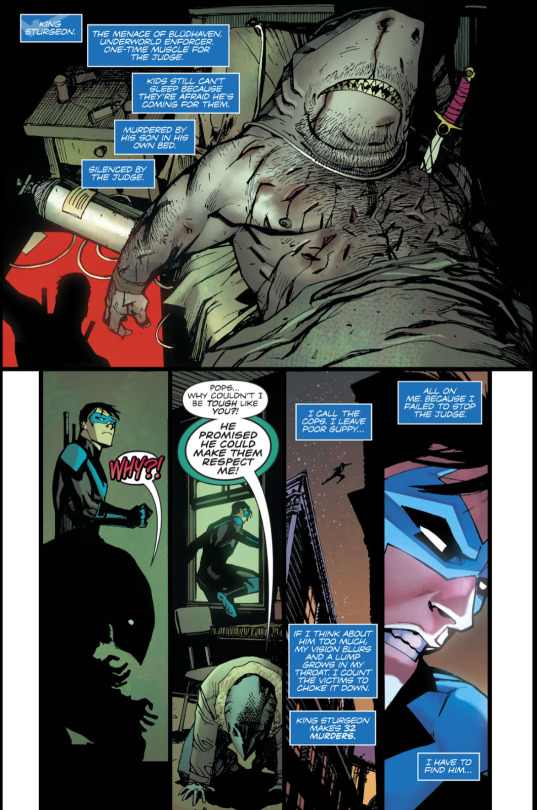
(Humphries, Sam, writer. Chang, Bernard, illustrator The Untouchable: Chapter Four: Infiltration. Nightwing: Rebirth no. 38, e-book ed. DC Comics, 2018. pp. 09)
But Dick’s newbie incompetence is not the only way Taylor mischaracterizes Dick. It is by combining the lighthearted tone of his story, his depiction of Dick as a blank canvas “good guy,” his avoidance of conflict, and his attempts at answering difficult real-world problems that Taylor ends up creating a version of Dick Grayson that is utterly self-absorbed and lacking in foresight.
Telling and not showing is an immense problem in Taylor’s writing. There’s a difference between how a writer attempts to portray a character and how, given their actions in the context of the narrative created, the story shows them to be the complete opposite. In such cases, the story triumphs over the writer. This is why I claim that, though Taylor tells the reader that Dick is caring, intelligent, and a hard worker, he actually shows Dick as as selfish, incompetent, and naive.
Take, as an example, how Taylor sidelines the Heartless storyline in favor of slice-of-life scenes. If Heartless was not there, perhaps those sweet moments could be just that. However, as in the world of the story there is currently a serial killed running around free, making orphans out of the youth Dick vowed to protect, the fact that Dick is not constantly working to catch Heartless is not only out of character, it makes it so it seems he doesn't care what happens to the people of Bludhaven (And now also Gotham, given #111, which was released as this essay was being edited). Rather than stopping crime and bringing justice to Heartless’ victims, Dick would rather spend his nights in his apartment, enjoying a relaxing evening with his girlfriend and his dog.
Please do not take this to mean that I consider a slice-of-life story to be inferior to other genres. My reason for highlighting this is not to undermine the value of slice-of-life, but rather to argue that such scenes do not live in isolation. They exist within the context of a larger narrative, and what would be sweet in a sitcom-style story comes across as something entirely different when other characters are facing life-and-death stakes. It does not matter how much the writer tells us that these characters are caring and compassionate — their lack of action and urgency portrays them as self-centered.
Just as Taylor attempts to write the big climatic moments without properly building the momentum necessary to make them impactful, he similarly forgoes the work required to win the reader’s trust, and instead expects his audience to simply accept that important plot and character developments are happening off-screen. Rather than letting the audience experience the intrigue and devastation of the Heartless mystery by showing us how the horrors of these murders motivate Dick to continuously search for this cruel killer, Taylor instead advances these elements off-screen, opting instead to tell the reader they’ve occurred.
That is not to say that writers cannot streamline plots. They absolutely can and, in some cases, they absolutely should. However, streamlining a subplot is a far more complicated matter than just telling the reader said events happened off-screen and expecting them to simply accept it.
While it is impossible to provide a precise checklist with the step-by-step guidelines on how to properly streamline a subplot, I believe one of the factors one must consider is whether that plot should be streamlined or not. Personally, I believe that Dick investigating the character who was meant to be this run’s main villain is too big and too important of a story to be played off offscreen.
Dick has hardly spent any time attempting to apprehend Heartless. Instead, as time of writing, his investigation of Heartless has practically nonexistent. Instead, after not focusing on him for the majority of the run, we are simply told by Dick and Babs that they’ve been keeping an eye on Heartless, even if their investigation is never shown to us.
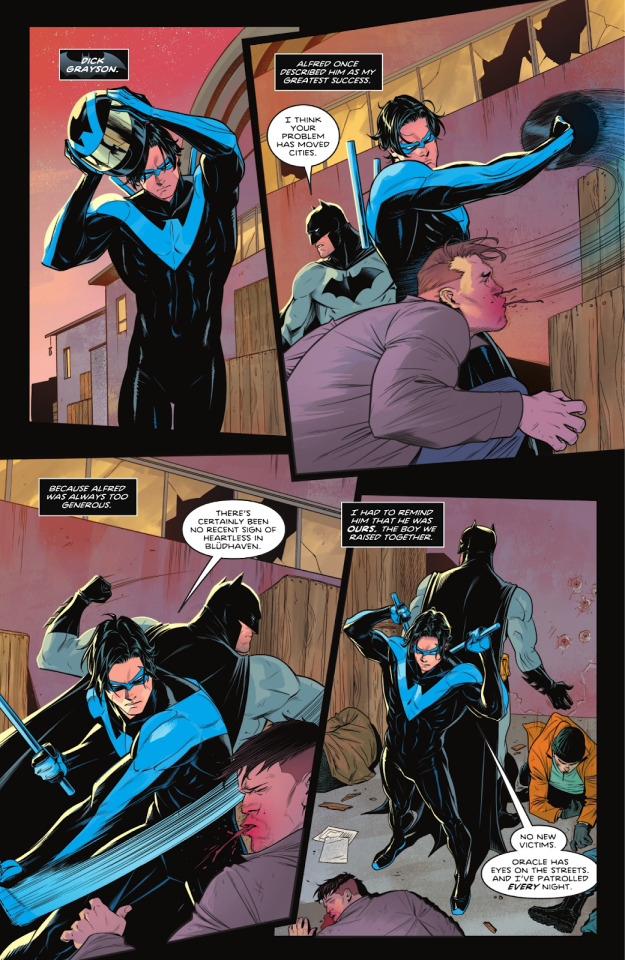
(Taylor, Tom, writer. Basri, Sami Nightwing. Nightwing: Rebirth. 111, e-book ed. DC Comics, 2023. pp 09)
If we, as readers, are to believe that Dick is the selfless detective and hero — the Heart of the DCU — that Taylor tell us he is, then finding and apprehending Heartless should be one of his top priorities. If Heartless was meant to be Nightwing’s big nemesis, then their confrontation should always be a source of great tension and conflict. Such importance would be demonstrated by showing Dick working towards stopping him at every moment he has free. But either those moments are not happening at all, or they are happening off-screen.
Having such an important conflict and such a crucial antagonistic dynamic develop does nothing to enrich the plot — in fact, it only detracts from them, for because we do not get to witness this relationship grow and we are only told that it is happening, the pay off that must come when Nightwing and Heartless finally have a big confrontation will be cheapened as a result.
Heartless' actions are so brutal and create such urgency that not prioritizing Heartless' arrest makes it seem like Dick doesn't care about his victims. Batman doesn't wait around when the Joker breaks out of Arkham – he hunts the Joker down. Similarly, Dick didn't wait around on the Judge – he hunted him down.
For Heartless to be the Big Bad, Dick should have put him in jail already and Heartless should have escaped. DIck should have faced him multiple times. He should have been Dick's priority because of how cruel and urgent his actions are.
Finally, there are three particular moments that I wish to discuss to illustrate how ambivalent Taylor is when it comes to Dick’s characterization, choosing to prioritize online discourse over who Dick Grayson’s established history and personality.
The first one comes from a throwaway line. And yet, because this was a throwaway line that demonstrated how little thought Taylor gives to his main character.
When Tim makes his first appearance in Taylor’s run in #80, Dick’s narration says that many would consider Tim to be the best Robin, and that he “totally gets it.”
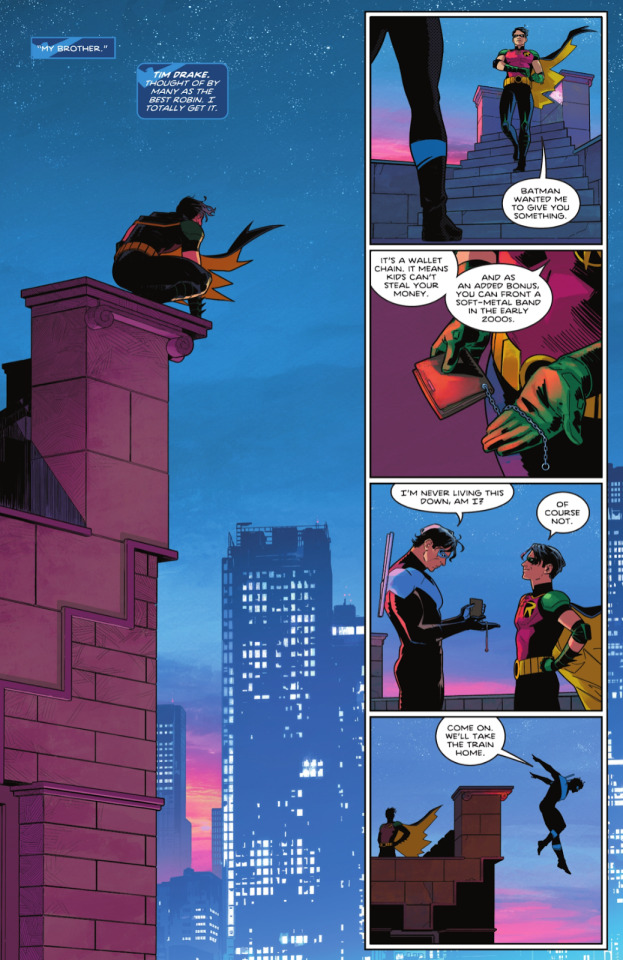
(Taylor, Tom, writer. Redondo, Bruno, illustrator. Leaping into the Light Part Three. Nightwing: Rebirth. 80, e-book ed. DC Comics, 2021. pp 09)
“Who is the best Robin” is a discourse that I, admittedly, care very little for. It serves no purpose other than to get fans to fight one another, bashing each other’s favorite characters in order to prop up their own. When posed on social media, this question becomes a thinly veiled attempt to generate high engagement. In reality, when people discuss “who is the best Robin,” they are, most often than not, truly arguing about who is their favorite Robin. But the question is framed in a way to be purposefully divisive, creating conflict within the fan community. The fact that DC plays into that divisiveness that requires their characters to be brought down so others can be lifted up for marketing material is concerning, but the fact that writers such as Taylor are letting that fan perception bleed into in-universe narration is nothing less than lazy writing that prioritizes online leaning into buzz over good storytelling.
Naturally, as a Dick Grayson fan my opinion is that Tim is not the best Robin. Dick is. But my problem is not that Taylor said that Tim was the better Robin, but that I think Dick would never concede to the existence of a “best Robin.” In fact, not only do I believe that it is out of character for Dick to believe that one Robin can be defined as the best Robin, I would argue that Dick would be offended that such a question could be asked.
Dick, more than any of the other Robins, understands the purpose of a Robin, as he was the one who created the mantle. By seeing so many others inherit his family’s colors and his mother’s name for him, he also understands better than anyone that each person who becomes Robin has their purpose in their own unique way. Dick would understand how each of them made the Robin mantle unique, how they added to its mythos in their own way, and how all of their contributions are equally valid and equally important. He would never single out one of them as the best because he knows that Robin is about an ideal of justice by bringing light into the darkness. Most importantly, understanding how many Robins tied their self-worth to the mantle, Dick would never want others to feel as if they fell short of some arbitrary measure by proclaiming they are not “the best.” Dick would be against that measure, against the very idea of ranking Robins, as if they were interchangeable, as if they each didn’t make relevant contributions. He would hate the idea of the mantle he created in honor of his parents being used to judge and measure the worth of those he loves. Dick would argue that there can never be a "best Robin" because Robin is always about being your best self in the service of those who need your help, and you can't quantify that.
The concept of a “Best Robin” is a marketing strategy and a fan-oriented discourse that Taylor casually imposed into the narrative without considering whether his protagonist would adhere to such ideas. He prioritized internet discourse over characterization, and while the former may be immediately fulfilling as the page is cropped and shared a few thousand times in the first few days after publication, only the latter will leave an impression that will last decades. Taylor is embodying a current DC Comics trend to favor the former over the latter. As scholar Steve Baxi said in his review of Leaping into the Light, that page “doesn’t feel like Dick Grayson appreciating his brother, it feels like Dick Grayson saying what the audience wants to hear.” (Baxi, Steve, “TRADE COLLECTION REVIEW: Nightwing Vol. 1 - Leaping Into The Light” Comics Bookcase, August 2021)
Although they share similar problems, unlike the “Tim is the best Robin” throwaway narration, the second example I wish to discuss in detail became a big plot point in the beginning of Taylor’s run. I’m referring to the choice of having Dick become a billionaire due to the inheritance Alfred left to him.
To be more clear, my problem is not with the fact that Taylor made Dick into a billionaire (after all, Dick inheriting wealth from his parents is not a novel concept), but rather with Dick’s musings on the subject. (Dick’s financial situation is inconsistent across the years. While some like Dixon and Wolfman allude to him having a trust fund his parents set aside and that remained untouched until Dick’s adulthood, other writers like Humphrey who portray him as more middle class and sometimes struggling financially. Then there are the numerous times in which Dick was left homeless, implying that he did not have a safety fund to go to when tragedy struck.) On #79, Dick says, without a hint of irony, that he always thought that Bruce could do more to help Gotham with Bruce Wayne’s money than he does as Batman.
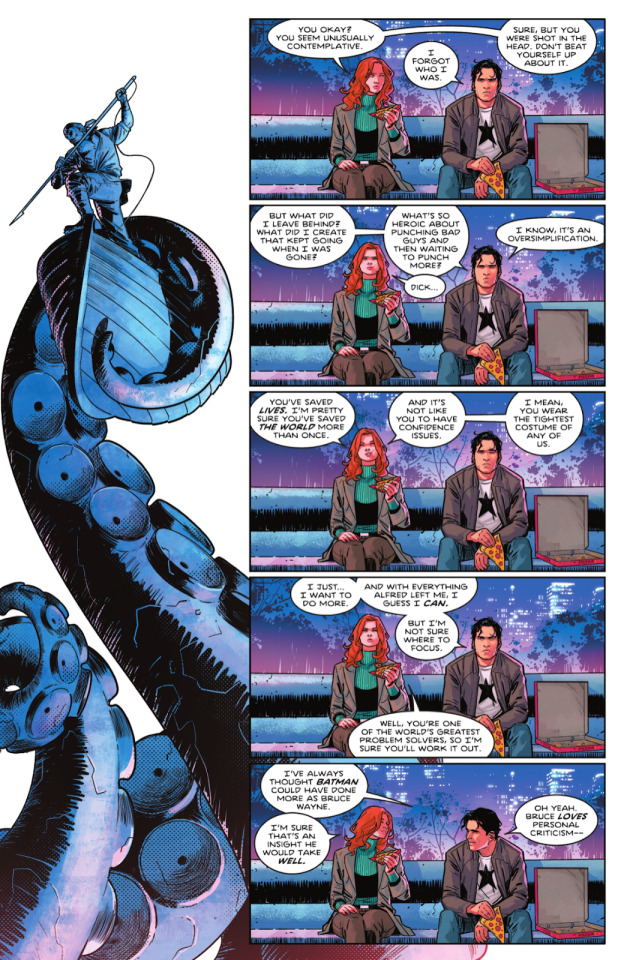
(Taylor, Tom. writer, Redondo, Bruno, illustrator Leaping into the Light Part Two. Nightwing: Rebirth. 79, e-book ed. DC Comics, 2021. pp 07)
This is a popular online discourse that reveals lack of knowledge about Batman and a naive understanding of how corrupt systems function. I understand we are currently very critical (and rightly so) of billionaires and the hoarding of wealth. I understand that this leads many — media critics and everyday fans — to analyzing how wealth is portrayed in the stories that resonate within our culture. But anyone who claims that Bruce has not used his wealth for the benefit of Gotham outside of funding his Batman endeavors has not engaged properly with Batman media. I’m not going to go into the merits of how Bruce’s wealth should or should not be portrayed and how DC has currently been handling this issue (that is the subject for an entirely different essay that is not relevant to this discussion), but I will say that Bruce has, canonically, used a lot of his money to fund safety net programs in Gotham, to invest in small businesses and on individuals, and in trying to make the city more affordable and kinder to those with less.
Twitter user Ashley|TheBatFamily 🦇 (@TheBat_Family) created a comprehensive Twitter thread of examples. These are but some of the ones that stood out to me and that feel most relevant to this essay:
In Cataclysm, Bruce attempted to lobby the US government to offer aid to Gotham after the earthquake;
Bruce used his money to rebuild the city during No Man’s Land;
Bruce invested in the people who were ready to start new businesses so Gotham could offer jobs to its people and rebuild itself without being fully dependent on others;
Bruce created scholarships so more people could attend university;
Bruce funds Leslie’s free clinic as well as other hospitals around Gotham;
Bruce invested on low-income housing developments in Gotham by working with local firms, providing accommodations to local residents so no one would be displaced;
Bruce expanded and modernized Gotham’s public transportation system;
Bruce ensured all Wayne properties were secured against earthquakes (which led to those residences being the only ones standing during NML);
Bruce funds libraries and museums;
Bruce funds green efforts not just in Gotham, but in other places by buying land and making them nature preserves;
Bruce funds orphanages and provided them resources (from educational supplies to toys for the children);
Bruce provided support for immigrants;
Bruce funds appeals for wrongful convictions;
Bruce provides employment for former convicts;
(Ashley [TheBat_Family]. Twitter, 13 October 2020, https://twitter.com/TheBat_Family/status/1316006509923520512.)
In short, Bruce Wayne has done everything and more that Dick claimed he wished to do for Bludhaven. There’s nothing novel about the idea. Batman narratives don’t put as much focus on these endeavors and do not place as much emphasis on Bruce’s philanthropy simply because they Batman stories are, at their core, detective stories first and foremost. Their focus is on investigation and crime solving (Though I would argue that Cataclysm and No Man’s Land put a lot of focus on issues of wealth, class, and examine Bruce’s financial responsibility towards the city).
But just because these examples are not the focus of the stories in which they are present, it does not mean that they do not exist. Neither does it mean that Batman stories do not engage with themes of wealth and class inequality, as well as systemic corruption. In fact, I would argue that many of the best ones know how to use Bruce’s privileged status to explore these issues. The Court of Owls by Scott Snyder, for example, brilliantly uses the Court and the Talons to engage with these themes. (An essay analyzing the Court of Owls through such a lens would be a fascinating study, especially when exploring the parallels and foils between the Court and the Talons, and Bruce and Dick. Alas, this is not the place for it.)
Dick, who not only has always been characterized as knowing Bruce better than most people, but who was also raised by Bruce, would know about every single one of the examples listed above. Dick, of all people, had a front row seat to all the ways in which Bruce helped Gotham with his wealth, both in examples that were covered by the press, and the ones Bruce did secretly without taking credit. Dick attended countless fundraising events, press briefs, boardroom meetings. But most importantly, Dick would have witnessed with his very own eyes that lack of funding is not at the root of Gotham’s problems.
The problem in Gotham is not lack of money or safety nets, but rather, it is that its systems are so corrupt that pumping more funds into it will do nothing to help those in need. Instead, it will only further enrich those who are already in power. That’s why in this comic book world with comic book conventions and comic book logic, Batman is needed. Batman is a disruption to the system, forcing it to change, dismantling it from both the outside and the inside. In Dixon and Grayson’s Nightwing runs, Dick’s understanding of systematic problems can be observed in his motivation to become a police officer, as he joins the force with the goal to weed out the corruption and dismantle the system from within. Money alone cannot save a city if the foundation was purposefully designed to favor those on the top by taking from those at the bottom.
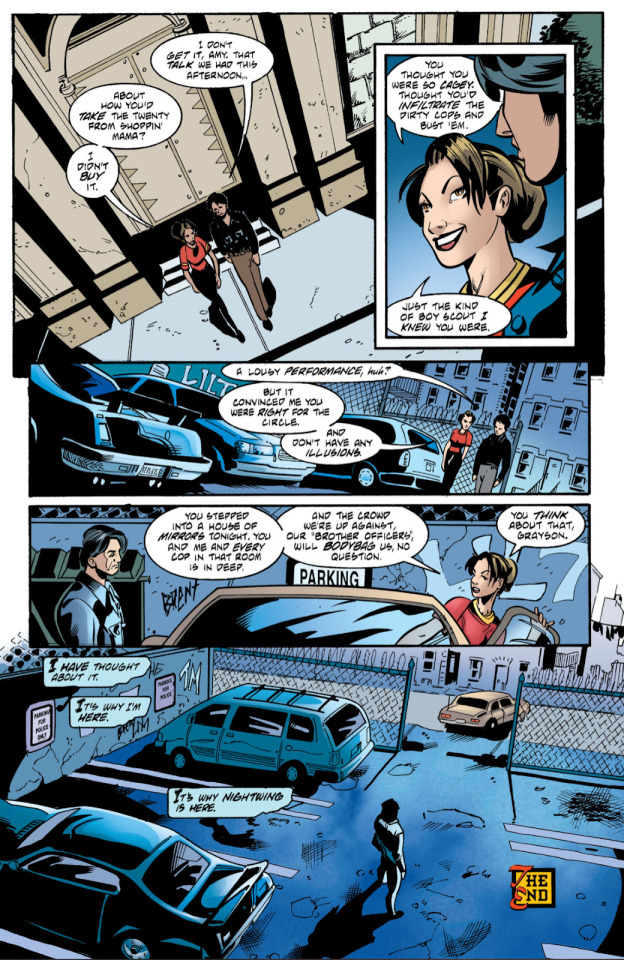
(Dixon, Chuck, writer. McCarthy, Trevor, illustrator The Threshold. Nightwing. 60, e-book ed. DC Comics, 2001. pp 22)
But of course, Taylor never takes a moment to wonder how being raised by Bruce Wayne would influence Dick’s perspective on this matter. Instead, he once more takes a popular online discourse and makes Dick say it out without considering characterization. A more in-character and canonically accurate approach to such a story moment would have Dick comment on all the ways Bruce used his money behind the scenes to help Gotham, and how he wishes to do the same for Bludhaven. A single line change would have demonstrated Taylor's willingness to engage with Dick’s character history rather than just copying the hot takes he sees on social media.
Not only that, this change in dialogue would also establish Bruce and Dick’s closeness as it would show that not only is Bruce a source of inspiration for Dick, but that Dick is one of the few people who have seen this side of Bruce. That would have also made the hug between Bruce and Dick in the #100 more emotionally effective and thematically cohesive, especially as they are in front of Alfred’s grave.
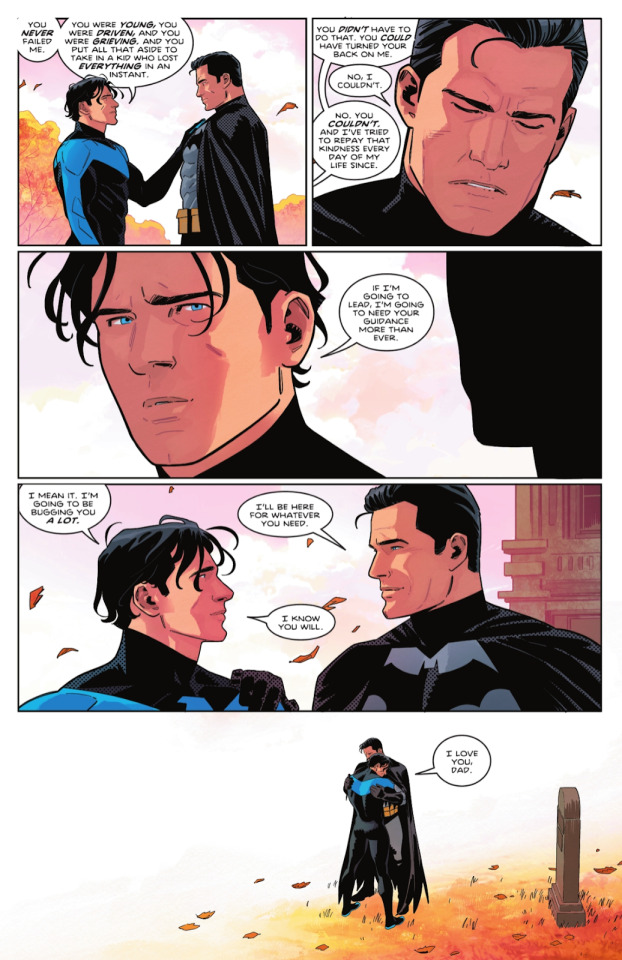
(Taylor, Tom, writer. Redondo, Bruno, illustrator Power Vacuum: Part Four: The Leap. Nightwing: Rebirth. 100, e-book ed. DC Comics, 2023. pp 44)
The truth is that Dick's Haven project engaged with issues homelessness only in the most shallow of manners. Rather than discussing the realities of this matter, it simply used it as a backdrop. It is an appropriation of hardships by someone who is unwilling to engage with the difficulties brought upon by said hardships. It is substance-less writing masquerading as social consciousness.
The third example I wish to cite which demonstrates Taylor’s lack of consideration for Dick’s character or his backstory comes when Haley is taken in #87. Dick’s internal monologue reads that “The last thing I’d want is for anyone to be threatened because they’re close to Dick Grayson,” referring to the fact that he is now a public figure thanks to the press conference he gave about his plans for Bludhaven.
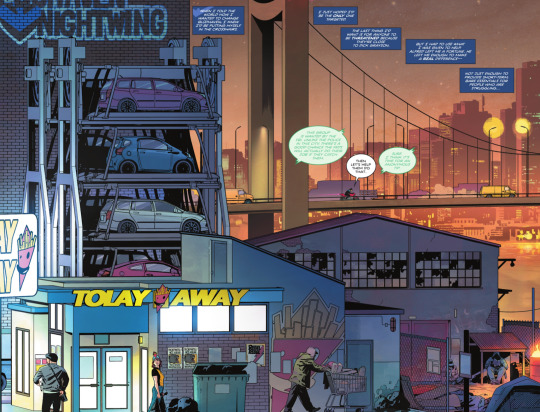
(Taylor, Tom, writer. Redondo, Bruno, illustrator Get Grayson. Nightwing: Rebirth. 87, e-book ed. DC Comics, 2021. pp 09)
The idea that Dick Grayson, billionaire Bruce Wayne’s first child, was unaware of the dangers faced by those associated with a public figure is laughable. The idea that the first Robin, who was often taken hostage by villains who wished to get to Batman (so much so that Frank Miller famously nicknamed him “Boy Hostage”), did not understand the threat posed to those who are close to powerful figures is insulting. After well over a decade as a superhero, and after well over a decade of being associated with a wealthy public figure, Dick should know better than most how such ties can put loved ones at risk.
In-universe, this line makes Dick appear so self-centered that he does not take into consideration how his actions affect his loved ones. It makes him appear dense, unable to think through his actions and strategize contingency plans and safety precautions before taking such a giant risk.
Out of universe, this betrays a lazy way of storytelling, with Taylor going for low-hanging fruits without thinking of how that might affect the characterization of his protagonist. Out of universe, a collection of throwaway, thoughtless lines like this demonstrates just how uninterested Taylor is in giving even the slightest consideration to who Dick Grayson is meant to be, instead putting his focus on the gimmick that will get him noticed on social media.
70 notes
·
View notes
Text
I love the batshit storytelling power of tabletop games.
Things my players have done in our campaign so far:
- Left Glaedr's eldunarí to freeze outside because they used him as an eye for their snowman and then forgot about him while they ran off to do their mission
- My werecat player traumatized the thirteen year old dragon rider student by giving him a "prophecy" about how he is destined for great things, but he was going to be betrayed by the person he trusts the most (he pulled that completely out of his ass).
- My dragon player has made a pact with the weird groundskeeper/janitor around campus to fuel her kleptomaniac tendency, and steal a gem from my blacksmith player. More on that to come.
- They did some absolutely heinous things to a pack of Shrrg in their first combat encounter. RIP.
- They adopted one of the Shrrg after they doomed him to a slow death of starvation by shattering his teeth (horrible). They healed him, and charmed him into being a friend, and then forged him a new set of magically enchanted steel dentures, so now he is going to be a permanent party member!
- They essentially ignored the main quest (a mysterious circle of destruction and mutated Shrrg that suggest a magical detonation in the same vein of the Vroengard explosion/the Galbatorix explosion only a few miles from the school) in order to go on a new self imposed sidequest of... Well.
- First the party cajoled Saphira into dragging back a Christmas tree.
- The bard (my boyfriend irl) has an antagonistic love-hate relationship with Glaedr (somehow) and spontaneously invented the holiday Christmas in universe while trying to convince Glaedr to sub in as a Christmas ornament. Glaedr refused.
- The whole party, now on board, convinced all the other eldunarí to be Christmas tree ornaments. Glaedr eventually caved and agreed to be the tree topper (the most prestigious position for the most important eldunarí, of course, they told him).
- They decided to name the holiday Gladmas in his honor.
- They came up with the (completely original) idea of a Gladmas icon- a man on the back of a beautiful glittering red dragon, who visits all the little children and leaves them presents. They came up with a plan to use all the eldunarí to power a hasten spell to get them around the world in one night. And they know just the perfect duo to pull this off! The only rider around with a red dragon who would fit the bill!
- So next session is going to be a side quest to convince Murtagh to become Santa Claus.
#eragon#inheritance cycle#murtagh#I don't even know man xD#it's so hilarious#and it's even FUNNIER that it would be a GENUINELY CATHARTIC EXPERIENCE FOR HIM#they are going to CURE MURTAGH'S NEW BOOK TRUAMA#by turning him into SANTA#only my friends man#dnd
130 notes
·
View notes
Text
I finally have time to talk about Lone Trail. I will be focusing on its depiction of science, technology and its progress. Will get a bit political, but funnily enough less than I imagined.
The thing that called my attention most in Lone Trail were the discussions on the nature of scientific progress. This is a theme that’s dear to me and the stuff I research about. It’s easy to think of scientific progress like an inevitable march forward, like an escalator. After all, we are much richer than we were before, right? Go to OurWorldInData dot org to play around with economic statistics in time – make sure to check the World GDP chart, from year 0 to 2000 and see it taking off like a rocket from year 1700.
What kind of Uncle Ted fan or neoluddite would go against that? Haha…hah…
Truth is that, although its effects are there, it’s not a clear if this is the little, neat process techbros want us to believe. It’s new and produces more, therefore it’s good, right? I could be writing this as a new wave of AI-generated NFTs pollute my algorithm.
That’s what makes the storytelling in Arknights so effective: it mashes together fantasy and sci-fi to really tell stories on the role of beliefs, technology, science and religion. The Rhine Lab saga is definitely an exploration of technology, with focus on the equivalent of the United States. During the period before the First World War, 1870-1913 (which is the one that Arknights draws most from), the world underwent through the so-called Second Industrial Revolution and I’ve read economic historians considering it the most innovative period in human history. I mean, obviously, there is an absolute number of inventions in our current age, but in relative terms 1870-1913 experienced a much larger number relative to the previous one.
The escalator narrative constructs scientific achievements as work of daring people (mostly men, but there were women like Marie Cuire), that combined science and technology to help mankind, like Prometheus giving mankind fire from the gods (in fact, one of these books is even named “Prometheus Unbound”); more than often they have to fight against the establishment. Remember Ignaz von Semmelweis? He just wanted doctors to wash their hands. Even I learned this standard narrative in the university. But that’s not the entire story.
The positivistic paradigm – of a science free of value judgements, made with the power of math – has actually helped build this escalator narrative. In reality, some scientists and scholars are horrible people. Later, I learned that Semmelweis, as much as he campaigned for the right thing, was a very arrogant person, who abused everyone around him, to the point few people went to his funeral.
Narratives focusing on one single hero are easy to sell and the ones building them are always on the lookout. Remember how ten years ago, a lot of people tried to push the narrative Elon Musk was going to create a new industrial revolution? Nowadays he’s just an arrogant loser who keeps dragging on his midlife crisis. The 1880s also had similar people like that, such as Thomas Edison.
Kristen Wright is definitely better than them both, because she is actually an engineering genius. But she’s also just like them, in the sense of unethical experiments, collusion with the military-industrial complex and being an overall superficially charismatic, but rotten to the core person. And she’s surrounded by a lot of people like Parvis and Ferdinand.
Breaking this line of reason, I have to say how much I hate Nietzsche’s ubermensch and master-slave morality, I hate Great Men theory, I hate Ayn Rand; these people are sheep who think themselves wolves. And before you say that Nietzsche didn’t consider himself an ubermensch, well, neither did Parvis and his reasoning was the same. For every person fancying themselves ubermensch, there’s a lot of those whom he’d call untermensch to clean up their messes. You have no idea of how times I stumbled upon people (especially libertarians) that advocate lower barriers to regulations that were written in blood, so that progress can happen quicker. Creative destruction works, as long as some people get “creative” and others clean the “destruction”. Deaths and injuries? Acceptable, just give them a pension (but fight tooth and nail in the court to not do it beyond the barest of the bare minimum, because it’ll lower the shareholder profit in 0.01%). Increase in inequality? Nobody will care in a few years, it’ll make everything cheaper anyway (look up Baumol’s cost disease to see how wrong that statement is, without being incorrect). I’m not exaggerating, sometimes the people saying that don’t even bother lacing it in politically correct language.
Because Lone Trail showed it “worked” – Kristen Wright broke off the ceiling over Terra and that will have consequences (especially with Endfield coming closer). The data from her experiments will advance science, the sight of a broken ceiling will inspire artists and prompt politicians to act. Was it worth it? Well, it will depend on who you ask (like, Ifrit or Rosmontis would have strong feelings), but it’s just there now. Serious history isn’t kind on this question as well – many technologies have a lot of transgressions, both legal and ethical, in their supply chain (both the American and Soviet space program come to my mind – guess who helped them); the difference between an entrepreneur and a criminal are contextual, because both are finding new opportunities of profit and both interlock frequently.
In the end, anyone can put an equation that has its uses, not mattering if it’s a good person or not. But that is no excuse to find good ethical practices. Silence saw everything with her own eyes and I’m really glad she’s leading the initiative for a more ethical science in Columbia – especially because people who are willing to break moral rules tend also to be willing to break research rules (this is why the “research” made in concentration camps is actually useless, it didn’t respect experimental rules). So I’m really glad for the Arknights writers for understanding these nuances and communicating them to the audience through one of the best stories of the game.
55 notes
·
View notes
Text


Time passes but I can’t seem to get this scene out of my head. Certainly there are other scenes that are much more spectacular, but this moment shakes me to the very core. This is the first scene in which we get to see the ‘new’ Paul in action — the Lisan al-Gaib. Istead of being on him, of focusing on his expression as he makes what arguably is the most important speech in the movie, the camera fixes on his hand.
Hands gestures have always had an important role in history and myth. “Then Moses raised his hand over the sea (…) and the sea split” [Exodus 14:21]. In ancient Rome, the emperor decided the fate of the defeated gladiator with a thumbs up or a thumb closed in his fist. When he speaks of the possible futures he sees, Paul’s outstretched hand is reminiscent of God’s hand in Michelangelo’s ‘The Creation of Man’ in the Sistine Chapel, probably the most famous depiction of the act of creation.
The next moment, it becomes an axe; ready to cleave through space and time to descend on the head of Paul’s unwitting enemies.
Villeneuve is a mastermind.
He’s taken a scene that was already intense and enhanced it to the ninth degree for the most devastating psychological impact.
I stand by the fact that this is one of the most creative and effective and powerful choices in storytelling I have ever seen. It conveys everything in a single image: Paul is no longer a boy, he’s not even a man — he’s a god, holding the fate of the universe in the palm of his hand.



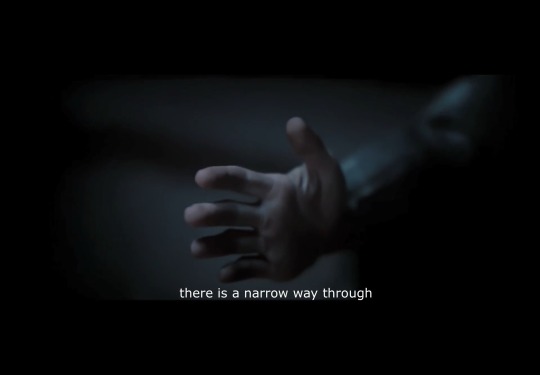
#dune part 2#dune part two#dune movie#dune 2024#paul atreides#lisan al gaib#mahdi#denis villeneuve#my thoughts#laysidel dekie edit
43 notes
·
View notes
Text
Kvasir messes me up so so so fucking much you guys. Like I understand the vikings had a different approach to death and yada yada so forth whatever arguments you wanna make they're reasonable but still it. I just.
You mean this beloved man, known for his wisdom and poem and song, and who went around helping people with his wisdom and poem and song and was dearly beloved by the gods just. You guys he was straight up murdered and his blood stolen for magic fucking mead. There's no revenge for his murder or anything it's just that Odin saved his mead.
"Folk declares that every skald (poet) has a drop of Kvasir's blood in him. ... because a world without it's poets would be too dreadful a place to image."
Messed up or not, he lives on in poets, storytellers, and songwriters alike- all those with the understanding of the power of word, the wisdom to yield it.
In The Bifrost Incident it's still the same. His blood pumping and fueling the machine, running through arcane glyphs. He's always just been used for his blood, and even more irony drawn from it likely being Odin gaining the most use from his blood.
And yet, no matter how miniscule it may seem, Kvasir still lives on in his universe there too, in poets and songwriters and storytellers- somehow, The Mechanisms carry a piece of him in their travels ever since his death and Yddrasil's fall, just as you and I may have his blood in our veins.
#RAAAAAAA KVASIR!!!!!!! HE WAS THE FIRST POET I'M PUNCHING AIR!!!!!!#as someone who feels drawn to the power of word (i like writing heehoo) he messes me UP#also to clarify my books say that Odin wanted a draught of the mead bc the mead gives the drinker the powers of kvair#and Odin didn't need kavsir's wisdom odin already got that from the well he wanted kavsir's tongue#his ability and fluidity of speech#honestly the Myths really jump around from “Odin is a mystical all knowing otherworldly wise being to be respected”#to “heehoo big smart eye patch man”#which is what happens when you choose to study a religion long since mixed up by cultural changes and views#aka ppl making shit up for personal biases or compromises#the mechanisms#the bifrost incident#the mechanisms tbi
103 notes
·
View notes
Note
I am here actually to appreciate your post. I saw a blogger’s post saying The sign would have been ‘successful’ had it got filled with fantasy and romance and limit action to 10%. I wondered why that person, who says BL is all about romance, watched a show whose genre is action. Then I saw your post about people watching many shows to stay in fandom and I agree. Also you are right about dramas with a complex story receiving heavy criticism. Everything (even lack of proper plot or conflict) is exempted in a romance drama. No wonder most BLs are confined to ‘2 boys and their jealous & crying moments, routine conflicts enhanced by Escola or leads explaining how important Nikon printer is for their relationship’
Well damn hit me in the feels with this appreciation I'ma get all shy and shit.
I always wonder if by "successful" people mean in terms of critical acclaim, story telling, or monetarily. When it comes to Thai shows - and some please correct me if I'm wrong - it's difficult to tell how "successful" they are terms of audience reach/monetarily because there's no easily verifiable information. Like, there's Youtube numbers sure, but The Sign as an example, aired on Channel 3 what were it's ratings total on that channel? Idk, does anyone know that? Sincerely asking lol
Personally the way I like to judge a piece of media is what I call the Roger Ebert method; he often judged films based not solely on whether they were "good" or "bad but by how successfully they accomplished their goals.
If you read his review of Space Jam while it's clear Ebert doesn't think the movie is high art, "You can watch the movie on the sports and cartoon levels, and also appreciate the corporate strategy that's involved. [...] It is difficult for an actor to work in movies that combine live action with animation, because much of the time he cannot see the other characters in a scene with him. But Jordan has a natural ease and humor, an unforced charisma, that makes a good fit with the cartoon universe."
Ebert praises that the film, while filled with obvious product placement and banking on both nostalgia for the toons & star power of Jordan, accomplishes it's goal of being a family for that can be enjoyed by adults and children, and also the ability to blend techniques of live action, animation and 3D rendering.
I bring this up specifically b/c when I see "reviews" of shows in BL - the most common form of meta I see in BL fandom as a whole and that's not a knock just an observation - it's usually always about the narrative. Nothing about the filmmaking. And if there is discussion about he filmmaking it's usually misinformed or worse misinforming - no that's not what aperture means, yaoi framing isn't really a thing in film, the t-shirt is really just a t-shirt, etc, etc.
And like I get why. Fandom is more about story, what the words on a page or what the characters on screen are doing and saying. It's easier to talk about the amazing communication two characters have b/c you don't really need a film knowledge to discuss that. Which is a factor in why I think shows with lower stakes, more streamlined and straightforward plots get praised at a higher, less diligent and harsh level, than shows that are a bit more daring. They're less challenging in structure, they take less risks, so there's less to critique, and there's less room for a show to disappoint.
There comfort food, rather than trying something new at the restaurant. I'm not saying this is a bad thing, again, this is just a general observation.
To me, The Sign is miles better than Cooking Crush on a simple technical level. I only watched one episode of Cooking Crush and I found it pretty mediocre at best from all technical points: acting, editing, cinematography, directing, storytelling.
This isn't to say Cooking Crush is "bad" or that even if Cooking Crush was "bad" people shouldn't like it. I don't give a fuck if people like it, good for you chase the things that spark joy! I like lots of "bad" media, have y'all ever watched Jason Takes Manhattan?
For me, The Sign, like Space Jam, accomplishes it's goals and those were ambitious goals. An action fantasy BL that actually lives up to that premise and looks good?? The fight choreography looks great considering the obviously budget??
Like one of my issues with Laws of Attraction - aside from how painfully disinterested those kisses looked - was the fight choreography was bad.
The characters very rarely land hits in a way that looks real, or even marginally real. I can only speculate they didn't hire a stunt coordinator and/or couldn't hire stunt doubles so there was a worry of injury on set (for both reasons).
This isn't a disparagement on the actor(s) either, like stunt work is difficult and it's important to have professionals on set who can walk an actor through the steps so both them and others don't get hurt. Jackie Chan is probably one of the best known actors alive for stunt work, but watch how many times he fumbles and potentially hurts himself to the point where other actors are actively worried for him:
youtube
So yeah I'm going to give The Sign it's fucking gold star stickers b/c aside from some missteps in the gun handling - to many one handed gun fights but even then it wasn't all the time and bullets ran out of ammo! Y'all don't know how exciting for me that was to see - the fight scenes look damn good.
I understand the work that went into them, I understand the pre-production time that it took for the crew and cast to learn that and filming them well is another beast too.
There's a couple scenes with shaky cam that I dislike, but god do I love that first long take in The Sign. I love how good the CGI looks overall again, considering what is probably less budget than Black Christmas (2019).
I'm admittedly, fucking picky about what I watch b/c I'm really lazy and prefer watching films in general. I don't really like TV all that much, but if I am watching a tv show I wanna be impressed with more than just the characters talking to each other. Especially if said show is 12 hours or more.
When I'm looking at a piece of media - a comic, a novel, a film, a tv show - I'm thinking about stuff like "what were it's goals, and did it accomplish them? How was the filmmaking? How was the narrative structure? What is the time/place/culture this was made in?"
I'm not sure if people are arguing if The Sign was "successful" in terms of narratively, monetarily, or critically.
In reality we can only really speculate on how successful a Thai BL is based on data that's not not entirely accurate - social media, youtube stats, awards, etc - and even then most of that is based off international audience.
I can glean that 2gether was successful for gmmtv b/c it got a second season and a film, pretty much skyrocketed Bright and Win's individual careers but again, and created a cross country alliance for activism. But even all that is still speculation not facts (except the alliance that's a real thing that happened lol).
[This is all regardless of my own feelings regarding the show which is not kind. But feelings have nothing to do with individual discussion about how monetarily successful or accomplished a show is or isn't.]
Like it might be valid speculation on both shows but it should always come with a disclaimer of - these are not facts. Also, what is "popular" or "successful" can and will be dependent on individual countries too.
Take Cutie Pie for example, I would argue that it wasn't super "successful" here with American fans, but given how overwhelmingly popular Zee and NuNew are in both Thailand and Korea, I would then argue that the show was a success in Thailand and Korea. So was Cutie Pie "successful" or not? I would say yes!
Because "success" isn't and shouldn't be measured only by how western fans receive a piece of media.
In regards to The Sign, I'd argue it appears to be very successful with only the partial data I have at hand - social media which includes places like twitter, facebook, tumblr, the success of their sold out showing for the finale, a special episode, etc. If people argue it was unsuccessful in terms of narrative, well that's debatable and I have no interest in debating why the show is good except in terms of technical filmmaking and storytelling.
And even then it's a pointless debate like or dislike whatever just don't lie or mislead people regarding film terminology and techniques or harass people because they did like A Thing or clog up the tags with annoying posts about how you didn't like said Thing.
Overall, I don't give "reviews" on things I watch either positive or negative cause, well, I'm lazy lol, I don't believe putting how much I hate a show in it's tags and a thorough rating system would be to much work. I actually like how My Drama List rating system works, I just find most reviews on it to be Annoying lmao. Like giving Kinnporsche a 5 or below is absolutely bonkers to me but whatever es lo que es. But I also don't think my thoughts and opinions on shows are that valuable in terms of discussion.
These are mostly my general thoughts on fandom at large and it's not directly at any particular people its just observations at large across various social media platforms.
I think if you like more squeecore shows that's totally gucci, I just wish didn't proposite that 1) those are the only valid shows in terms of BL/queer media and 2) didn't overhype them to such sky high levels
32 notes
·
View notes
Text
MHA's River Scene Symbolism - How to Build a Narrative Around a Simple Scene
As the My Hero Academia manga approaches its long-awaited final chapters, I thought it would be good to talk about one of the most important, but also most generally misunderstood moment of the series - Bakugou falling into the river as a kid and Deku trying to help him.
Let me start off by saying that Kohei Horikoshi is great at visual storytelling. In order to understand why he can write redemption stories so well, one has to look at the literal meaning and symbolism behind his panels. Bakugou and Deku's childhood memory, while being the start of their broken relationship, also serves as the first core symbol in the manga that later takes on many different forms. Hands- as Horikoshi says - are very expressive and tell a lot about a person. Shigaraki, for example, has hands all around his body which are tragic reminders of his origin. But what about the panel that started it all?
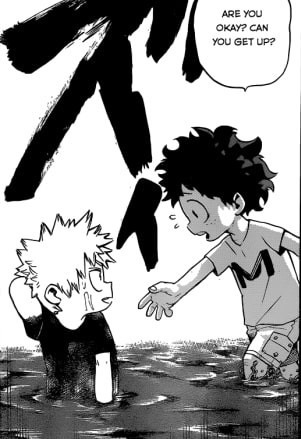
Bakugou and Deku are intertwined narratively
First of all, we have to talk about just why Bakugou reacted the way he did. Horikoshi's message in the story seems to be that if there's something wrong on the level of society, personal relationships can reflect that same state. The hero society favors those who have powerful and flashy quirks, making them heroes who fight those who were born different than the norm and went down on the wrong path a.k.a. the villains.
Even before getting his quirk, Bakugou could feel that he was different than Deku. He was naturally gifted in many areas, lived a comfortable life, and was praised for the smallest of things by the adults and children around him. If we add his natural brazen personality that he inherited from his mother, Bakugou was a kid both gifted and appreciated by the society. On the other hand, little Deku who lived in the same neighborhood was quirkless, plain, not outstandingly talented at anything and naturally shy and introverted. For Bakugou, who gained the ego of the size of the Moon, it made perfect sense that Deku ended up being quirkless - after all, Deku was unremarkable even before that from the perspective of the collective whole, and him being quirkless only reinforced the idea that Deku was below him. He wasn't outright hostile towards him, but he made clear Deku was someone who should always walk behind him because Bakugou is superior than him.
Until little Katsuki fell into the river. It was a simple moment, but changed their relationship forever. Because little Izuku who was supposed to be a loser ended up the only one who tried to help him. Because Deku showcased that he had the heart and selfless nature of a real hero, something Bakugou didn't have. But Bakugou was supposed to be the remarkable one, so was Deku mocking him by trying to help him? Was he saying that Bakugou needed help because Deku was better? Because this was what Bakugou started to think and became the source of his inferiority complex - he had to prove to himself that he was better by belittling Deku. Not a nice thing to do by any means, but a natural response from a kid whose whole world was shattered in that single moment.
The funny thing is, Deku and Bakugou's reactions stem from the two sides of the same feeling - when you realize someone has something that you don't. Izuku admires Bakugou because he's talented, brave and strong, something which Deku aspires to be (that's why he calls him his "Image of Victory"). Bakugou is afraid of Deku because he's naturally selfless and kind, so he wants to push him away in order to feel better about himself. Bakugou doesn't hate Deku, he hates what his presence in his life represents - that he's not the center of the universe and has to learn as a hero.
Bakugou and Deku both learn from each other in the story in order to become the best versions of themselves. Deku imitates Bakugou when he wants to be brave and improve his moves, while Bakugou's redemption journey is centered around his regrets about Deku. Interestingly they are also both each other's first "save" when their bodies moved without thinking.
Reaching out a hand
The river scene is the core of one of the most important themes of the series - helping those who might not need it and accepting the help that is given to you. Bakugou regrets not taking Deku's hand and not seeing his kindness, the same hand that is able to reach many others and inspire them, like Uraraka, Iida, Todoroki, Kota or even Shigaraki. Deku doesn't believe that Bakugou would ever want to receive help from him. Horikoshi visually paires this idea with the transfer of OFA - we see the users reaching out a hand to pass on the power.
The first OFA user is saved by the second who offered his hand to him. Funnily enough they resemble Deku and Bakugou, even AFO notes it. Whether it's the reincarnation of their will, or just visual parallels, the first OFA transfer happened because a person reached out to another. The manga's message is that one's soul can be saved if they are willing to accept the help others offer and are willing to change themselves for the better. Endeavor and Bakugou both died symbolically to reborn as better people. Shoto was able to reach Touya in order to save his soul. it doesn't mean the villains will be model citizens after these acts, but it's more about the spiritual cleansing of their souls, even if they die.
Deku offered his hand to Bakugou who refused to take it and went down on the path of bad. Years later, Bakugou understands that even if they are the ones who know each other the best, both of them misunderstood the other and regrets not accepting Deku's kindness. He apologizes surrounded by rain. a great call-back to how he was drenched in water and Deku willingly did the same to help him - now Bakugou lets the water cleanse his soul while he shows his most vulnerable side to the person he was afraid of and hurt the most. It really shows how Horikoshi was able to build a great narrative centered around one simple, seemingly unimportant moment that happened between two kids. It has become a great scene that highlights the problems of the hero society, how characters become heroes by offering help to those who need it, and how one can change by atoning for their sins (like what we see with Endeavor as well).
And most importantly, the river scene tells us how one doesn't need a quirk to be a hero if they have a selfless heart, and how Deku has always been and always will be a hero even if he loses OFA.
#mha#my hero academia#manga spoilers#bakugou katsuki#katsuki bakugou#izuku midoriya#midoriya izuku#discussion#mha spoilers#mha manga spoilers
26 notes
·
View notes
Note
Hello, long time lurker and fan of your analyses here. There is one thing that I've been thinking over in relation to how people in the fandom react to Salem, that I'm puzzled with.
I followed one blog because of their posting about a game, and the villain of the game have extraordinarily similar circumstances to Salem, and that got me reflecting...
Both of them had tragic circumstances (or at least, implied), both of them were "corrupted" by "dark creatures" and considered "evil" because of it, both were betrayed by loved ones and both had their faith in the gods shattered and rejected them and deride divinity, but I see that there is much more analyses, understanding and sympathy for the guy than for her.
He wasn't portrayed to be very sympathetic in the game (in fact, he wasn't that present, showing up mostly at middle-end) and most of his characther was informed by a movie and a dlc, and yet...
Why would that be? It is because gamers are more prone to sympathyze with villains? It's because Salem's a woman, or that people are more willing to see depth in video games than in animation? It is lack of media literacy?
Thank you for your time!
it’s gender. mostly
(*without knowing the other story it’s difficult to say how much narrative framing contributes to the disparity, but framing can have a significant influence; by this i don’t mean whether the character is portrayed sympathetically per se but more, whose perspective do we see? what details are given focus?
salem as a character has been kept extremely opaque—the lost fable is narrated from ozpin’s perspective so we don’t really know why she does anything, we only know why ozpin believes she did everything; to understand her v1/v3 soliloquies we need context given in v6 and arguably v9 before it’s possible to start piecing together what she’s really talking about / what she really means, etc—and that’s something rwby does on purpose, because it’s Making A Point about the power that storytellers have over their audiences, and truth being more difficult to come by than asking for just one side of the story.
which has the effect of making salem a difficult character. the thematic point the story is making with her character is that it is really, really easy to fall for dehumanizing propaganda if that’s the only source of information you have. to see beneath the surface with her you really need to pay close attention to what she says and does and be very skeptical of what other characters say about her, including the authoritative spirit of knowledge [i.e. you need to pick up on ruby only asking specifically for ozpin’s side of the story AND that it’s never stated by anyone that jinn’s answers are objective factual truth AND that the lamp probably works like the staff in that she answers the exact wording of the questions put to her]. because the narrative we’re getting about her is heavily steeped in in-universe propaganda designed to convince people that she’s an unreasonable, deceitful, supremely manipulative and malevolent, inhuman monster.)
<- but with that being said. fandom is always much more critical of female characters than male ones, and it tends to be much more difficult to persuade a fandom to dedicate this level of interest and energy to a female character than a male one. you can see this in action even within just the rwby fandom: compare the fan reception of raven vs taiyang, for example, with leaving her child in the care of two loving parents because she felt unable to take good enough care of yang being styled as the worst most horrid unforgivable thing a mother could do whereas letting his five year old "pick up the pieces" is often… flat out ignored in favor of headcanon that he’s the best dad ever.
or just the fact that the vast majority of the fandom regards the lost fable fight as "salem murdered her kids, ozma died trying to protect them" even though that is explicitly contradicted by what’s shown on screen with both ozma and salem being equally aggressive and oz having no idea what happened to those girls from the instant the fight began because he wasn’t thinking about them; they BOTH killed their kids in their fury at each other. but the fanon is that salem murdered her children on purpose in a vengeful rage and ozma was a good dad—in its most extreme form this becomes the Dadpin Nonsense.
(there is also an extremely funny talking point in dadpin circles to the tune of "if ozlem were gender-swapped no one would question that salem was abusive!" as if a) tauradonna shippers who scream and cry about blake being abusive don’t exist and b) dadpin people wouldn’t eat ozpin alive if he was a woman)
it’s complicated by the reality that salem does do a lot of very horrible things—terroristic attacks, enabling a serial killer by using him as her attack dog, her abusive treatment of cinder, everything she does to lionheart, sacking atlas, razing vale—and her moments of restraint or mercy are very easy to miss (she actively disguises her own release of her hostages in 8.9 for example) and again you have to be very attentive to detail to pick up on the fact that she cares about cinder. so it isn’t like she has an obvious "good side" juxtaposing all the atrocities, which means except for those who make a conscious decision to try to figure out what’s going on in her head while keeping an open mind, no one is going to see anything but the atrocities.
and again, fandom in general is a lot more willing to do that with male characters than female ones.
i think the clearest sign that It’s The Misogyny is the sheer amount of extremely widespread, extremely entrenched fanon there is about salem that is straight up contradicted by the text. her supposed "disdain" for humanity, for example; people act like it’s outrageous and nonsensical to suggest that salem thinks highly of humankind in the abstract (despite her indifference to individual people) even though… in both of her soliloquies she speaks quite highly of mankind… or her supposed "obsession" with magic, never mind that she barely uses "real" magic herself (most of what she does is Grimm Stuff, and she uses dust to make her grimm battlewhale fly) and never mind that she keeps flat out warning cinder that magic "comes with a cost." etc. this is a kind of flanderization driven by people disregarding what she says/does and mentally inserting generic villain tropes to fill in the gaps of story they miss by doing that, and then these ideas become memetically repeated often enough that they become the accepted lens through which everything she does is refracted.
(and that is how you get nonsense takes like "salem calls emerald’s semblance a semblance because she’s furious that this pitiful imitation of REAL MAGIC somehow fooled her, not because 'semblance' is what that kind of magic is called." this is why salem’s the only adult character who’s read as condescending and disdainful when she refers to the 17-19 year olds as children, even though all the older adults and some of the teenagers themselves do that. etc. there’s a preconceived notion that salem is disdainful of humanity and the text is bent to fit that reading even to the point of creating the absurd double standard that it’s… wrong for salem to use the same language used by every other character in the story?)
this kind of sexism is covert and usually subconscious; it emerges out of disinterest and an unexamined reflex to read female characters as less competent / less moral / less complex / less trustworthy / less rational etc. than their male counterparts, often with a side helping of blaming bad things male characters do on female characters instead. (eg see team rwby being blamed for things ironwood does in v7-8 by certain circles, or the constant "everything oz does is justified because salem evil" drumbeat).
watch how fast this fandom turns on summer rose once she turns out to be neither a martyred paragon nor a slave.
25 notes
·
View notes
Text
business matter — meet HeAVEN.
↳ synopsis: two of the most important kpop companies covet a partnership with a huge global brand, only to be surprised when the deal is extended to both labels. fearing potential sabotage and cynical strategies to secure exclusivity for just one of them, both CEOs resort to desperate measures. in a bid to maintain trust and prevent betrayal before the signing, they come up with a pact: forcing a fake relationship between the leaders of their star girlgroups. if one side attempted to fail the other, they threaten to expose it all to the conservative south korea.
masterlist | resident's archives | chapter 1
when was the last time...
you felt at ℎ𝑜𝑚𝑒?
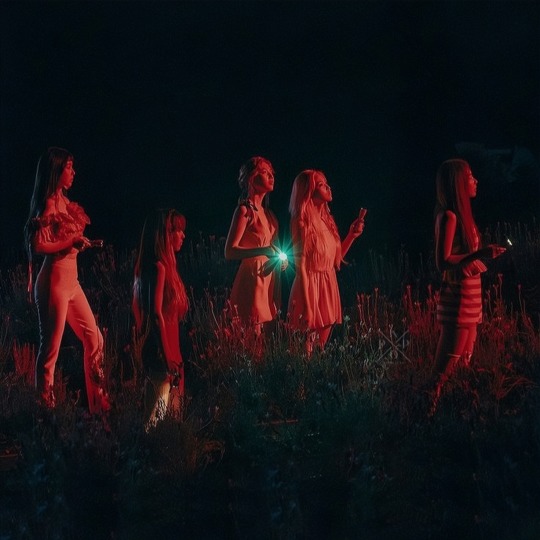
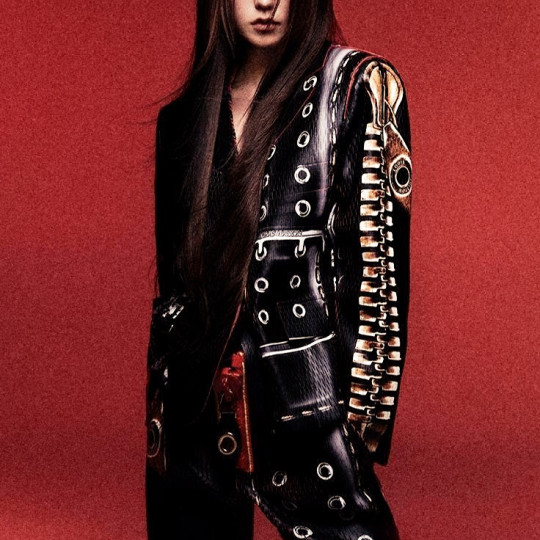
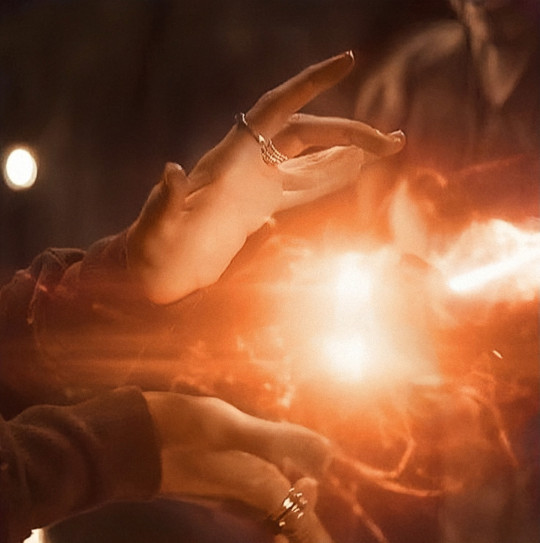
✶ . ࣪ ׅ stay here, stay with us ' 🪐
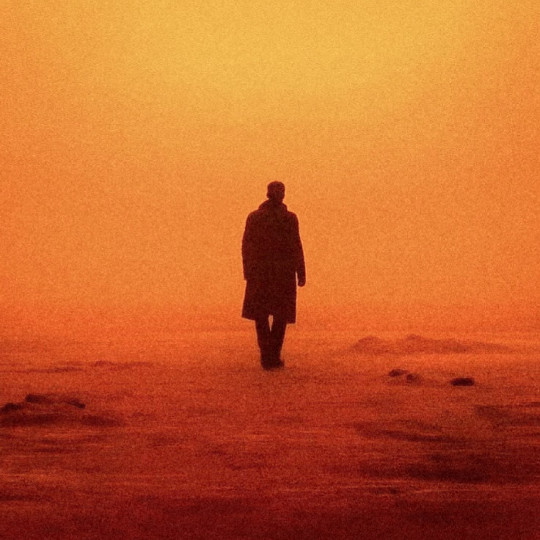
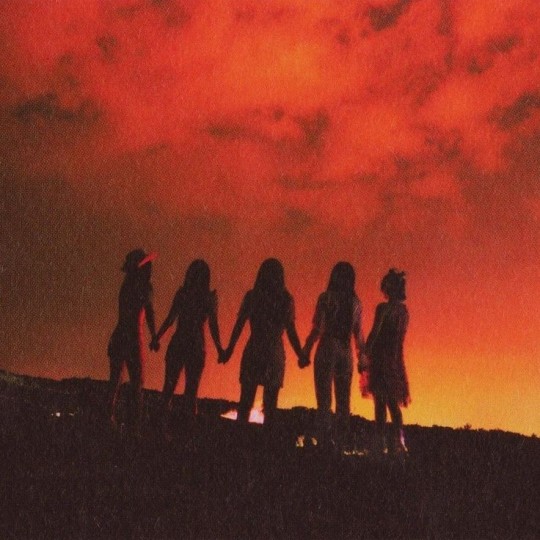
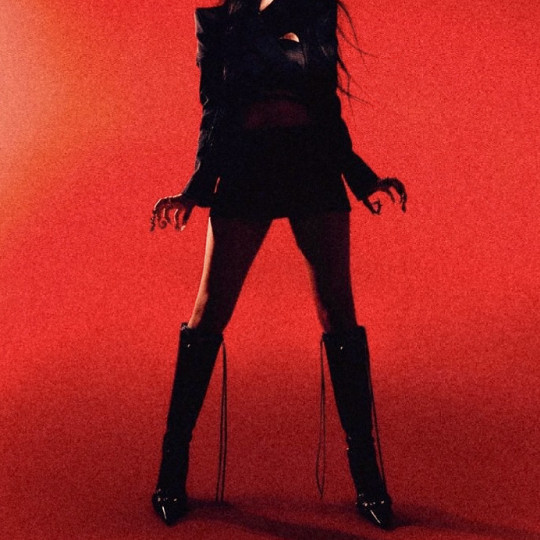

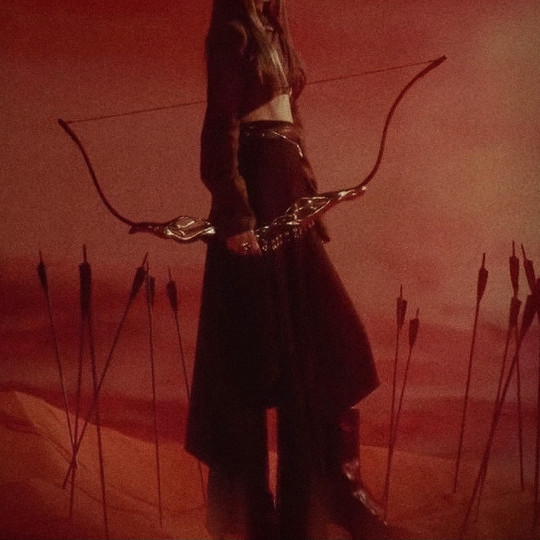
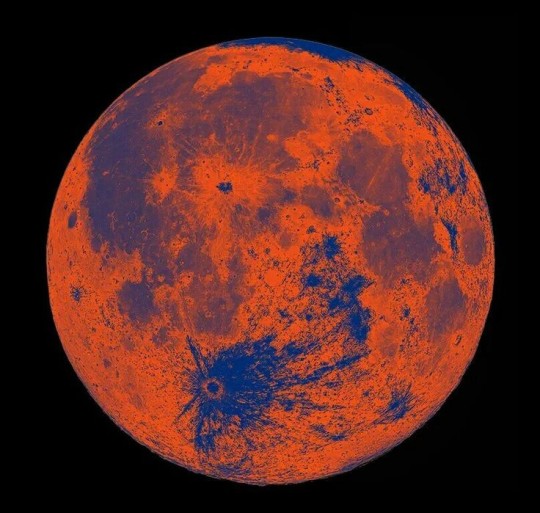
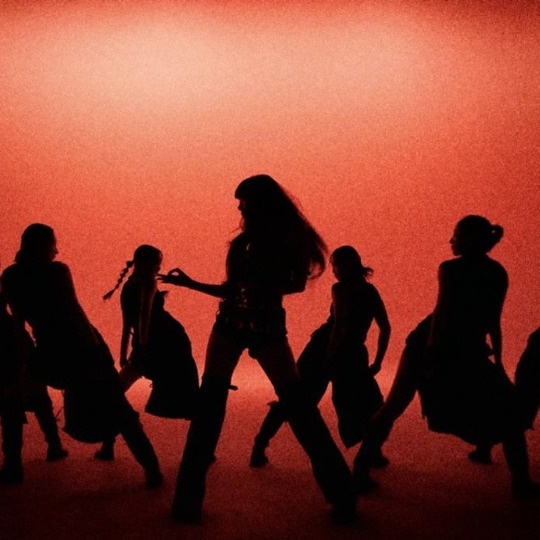
⋆。˚ ☁️ 𝑐𝑙𝑎𝑖𝑚 𝑡ℎ𝑒 𝑙𝑎𝑛𝑑. ✩˚ ⋆。˚
— HeAVEN (헤이븐), is a 5 member South Korean girlgroup under Olympia Entertainment. The group consists of Serim, Yves, Minnie, Chaeyoung and Yujin.
"=⌕ Olympia Entertainment? / "The creators of a new entertainment world." A company founded in the year 2000 by son of entrepreneur, Shin Na Myeong. His dream was to create a narrative universe with a story that could be told through the debut of various groups.
The first OE group was inVAGANT, a 4 member male band. They succeeded in becoming relevant and well respected as one of the pioneers of 2nd generation of kpop.
But it wasn't until the debut of boygroup VOYAGER in 2010 that the company got established as one of the kpop leaders, earning a title as the "new big 4," thanks to its contribution to the entertainment scene and cultural impact as the trendsetters of storytelling and complex concepts.
With their debut in 2018, HeAVEN rapidly became one of the most talked-about groups of their era. Reaching the top spot of all the lists with their 2019 global song, "The War," title track of their high-selling first full album, "Promised Land."
the 𝑚𝑜𝑜𝑛 is always 𝑐ℎ𝑎𝑛𝑔𝑖𝑛𝑔.
(i got to bring it back to its original state)
✎﹏୭ 🧷 ᵎᵎ HeAVEN unifies the two words haven and heaven.
— It's directly connected to their lore, which talks about 5 girls who discover earth is not where they originate from and have to find their way back home. "Haven" being a way to refer to their natal land, and "Heaven" being where it is, the moon.
• ! A magical, mystic story that switches between space and earth, transports into various planets and is laced with uncertainty, despair, longing as well as hope, love and beauty. It brings music with cosmic and dreamy sounds, just as much as strong, powerful and dark marching anthems, by the hand of the very versatile HeAVEN, with their long-time, extremely talented, unique members.
when ℎ𝑎𝑣𝑒𝑛 is not a place
i still find haven in 𝑦𝑜𝑢.
✎﹏୭ 🧷 ᵎᵎ songs that sound like HeAVEN...
! when there's hope.
*⁀➷
*⁀➷
*⁀➷
*⁀➷
*⁀➷
! and when there's war.
*⁀➷
*⁀➷
*⁀➷
*⁀➷
*⁀➷
— Olympia Entertainment Co., Ltd. KOREA. WARNING : All Rights Reserved. Unauthorized Duplication & Rent is Prohibited.
#aespa#karina#aespa karina#yu jimin#yoo jimin#giselle aespa#giselle#ningning aespa#ningning#winter aespa#winter#aespa x reader#karina x reader#yu jimin x reader#kpop x reader#kpop smau#aespa smau#smau#aespa fanfic#karina fanfic#aespa reactions#aespa imagines#aespa scenarios#loona#ive#exo#fromis 9#blackpink#itzy#gidle
45 notes
·
View notes
Text
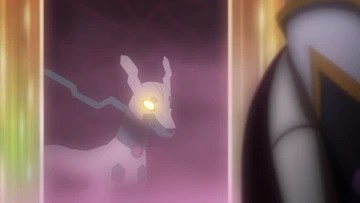


With the recent reveal of Gibeon owning a Shiny (White) Zygarde, many people have been trying to use this to insinuate that Horizons may take place in a separate continuity/timeline/universe from Ash's story.
However, I disagree, and I think that not only does Liko's show still take place in the same continuity as Ash's story, but that such sentiment is frankly something that goes without saying. If they truly wanted to create a new, separate continuity, why wouldn't they just use a new version of Ash to establish that? And in such a case, I believe they would be much more liberal about using legacy characters because such characters would be new versions of them, not the ones we know: the fact that they're largely avoiding acknowledging legacy characters for the most part implies they're still out there in the world Liko and Roy are travelling. It would also needlessly complicate things like potential meetings which have immense marketing value like an Ash and Liko meeting down the line. The world Anipoke has taken place in is so large and has gone through so much worldbuilding with still more potential for even more, that Ash and Liko can viably exist in the same world without crossing paths. There's no business or storytelling benefit to making Horizons a new continuity, as Liko and Roy are fundamentally different characters with a different space in the world from Ash to begin with, and it would be a total waste if they just dropped all the worldbuilding they had done over the past 26 years. Thus, it is most certainly in the same continuity as before.
---
Now on to my main point, I think there is a much simpler explanation to the existence of Gibeon's Shiny Zygarde that can justify why it exists even with the existence of Squishy and Z2, and in that same world. And one that I think may raise very interesting implications for this story and where we may be headed. Also one that mirrors the games, particularly SV and its deal with Terapagos and the Paradoxes.
I believe that Gibeon's Zygarde, alongside the Black Rayquaza and the rest of the Six Heroes who were believed to be Lucius's companions, are honorary Paradox Pokemon who were magically willed into existence by the power of Terapagos.
It is easy to miss, especially if you don't stop to think about it, but Terapagos's power, aside from being the harbinger of the Terastal phenomenon, is the power to create paradoxical things. It can "create" things using its power, things that originate from human imagination to those who believe certain things about them, but when you stop to think about those things, it makes no logical sense for them to exist in the way they are explained.
This is especially evident in the actual Paradox Pokemon from the games. Sada and Turo willed them into existence using their "time machine" and believe them to be Pokemon from the ancient past and distant future, or the one we "see" in the Crystal Pool being from alternate timelines. But as their names imply, their existence is a paradox: their whole deal is that they're not supposed to actually exist, and yet somehow, they got willed into reality and given life and physical existence. The dubiousness of their existence is enforced by their drawings in the Scarlet/Violet books, created 200 years prior to the game's events by Heath and his expedition team, contradicting the fact that Sada/Turo only created the time machine 10 years prior to the game's story. The dubiousness of how they came to be is also reinforced by their only other mention being in the Occult magazines, which are questionably trustworthy at best. We know that their existence started in Area Zero, a place filled with Terastal energy thanks to Terapagos, thus the latter is the creator of them.
The paradoxical nature of Terapagos's power is also reflected in the Crystal Pool event at the end of Indigo Disk, a place where you can seemingly talk to the dead, and Terapagos summons a Sada or Turo who was alive, supposedly before they created the time machine. And you give them Briar's book in exchange for the Scarlet/Violet book. But the more you think about this event, the less it actually makes sense, and the only conclusion you can make is that if it were our own Sada/Turo, the entire game's timeline would implode upon itself.
Now on to the anime, Gibeon is now known to have been a companion of Lucius. Lucius and his friends have the stories of their adventures chronicled in books and legends. This incidentally also parallels how the Paradox Pokemon are chronicled in Scarlet and Violet the games. But when you stop to look at everything, aside from Terapagos, the nature of the Six Heroes' existence is incredibly dubious at best, to the point where it's questionable if those six ever actually existed, or if they did, how they came to be. The same would likely apply to Gibeon's Shiny Zygarde. The Black Rayquaza is the biggest example: aside from being a Rayquaza, it is always shown glowing and crystallized, likely surrounded by Terastal energy. It may have even been created by and willed into reality by Terapagos itself, literally formed by Terastal energy. This is sort of hinted at very early on, when Liko's pendant, which was Terapagos, and Roy's special Poke Ball, which unleashed the Black Rayquaza, resonated with one another, and the Black Rayquaza didn't emerge until it resonated with Terapagos, which may imply that it wasn't actually in there and Terapagos used its power to will it into existence, alongside the other five heroes. The other Heroes seem to have abnormal traits as well, such as a giant Arboliva and two of the heroes being legendaries, and they only "awakened" once the Black Rayquaza did. This may imply they weren't real, and the only one of Lucius's Pokemon who wasn't willed into existence was Terapagos itself, who used its power to "create" companions for Lucius and its friends.
The same may apply to Gibeon's White Zygarde as well, who may have been willed into existence by Terapagos. This Zygarde, along with Rayquaza, are the biggest anomalies not just in their different coloration, but that they were literally owned by someone, which in the anime world should not be possible as major legendaries like them are largely above being owned by Trainers. Them being Paradoxes willed into reality by Terapagos would explain this.
This is most certainly an interesting turning point, and may raise a lot of questions to the true tale of Lucius and his friends, and what Rakua truly is. One thing is certain though: Terapagos and its special powers surrounding Terastal energy and the creation of paradoxical things seem to be playing a major role here.
#pokemon#anipoke#pokemon horizons#pokemon 2023#pokeani#analysis#white zygarde#shiny zygarde#gibeon#gibeon's zygarde#lucius#lucius pokemon#terapagos#black rayquaza#rayquaza#six heroes#rakua#pokemon scarlet and violet dlc#pokemon sv dlc#pokemon scarlet and violet#the indigo disk#paradox pokemon#the hidden treasure of area zero#pokemon anime#pokemon sv
22 notes
·
View notes